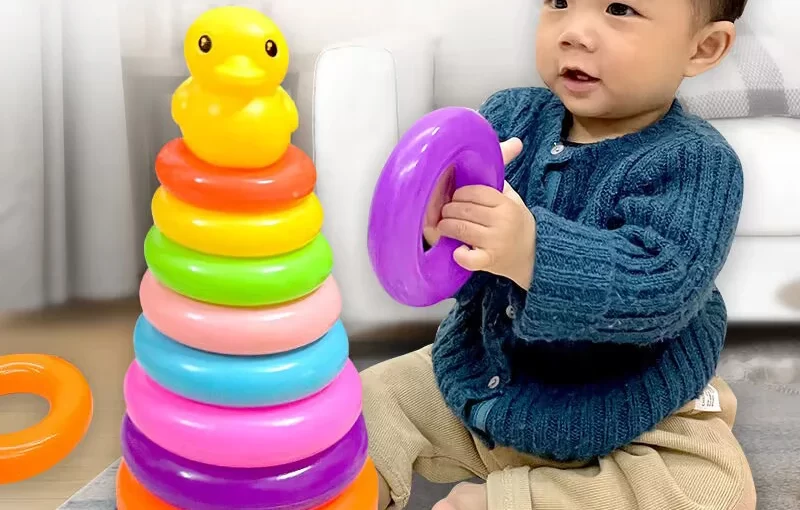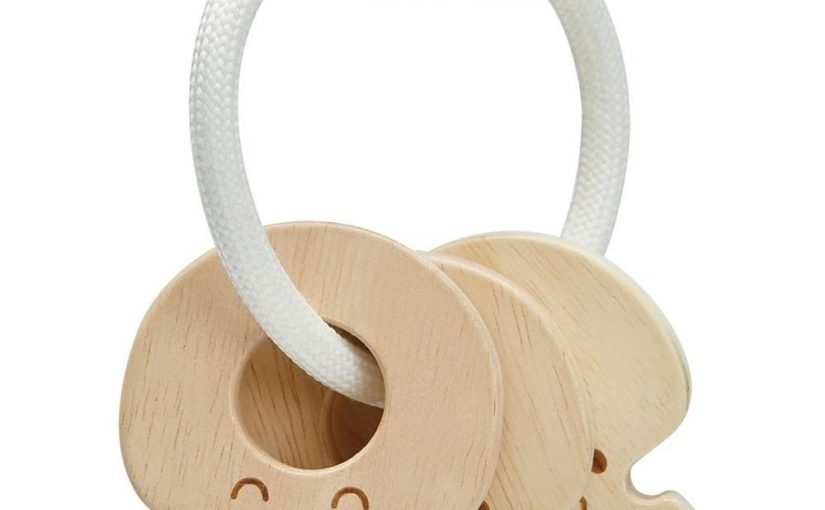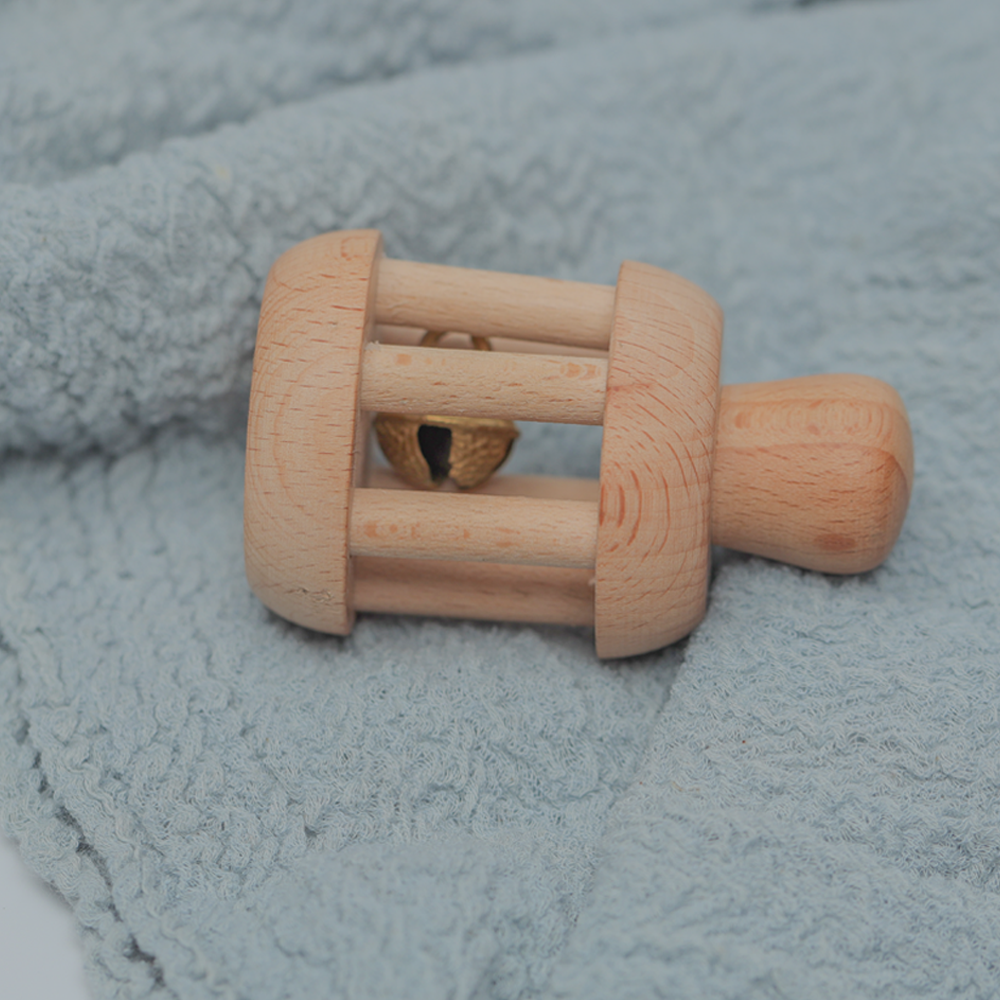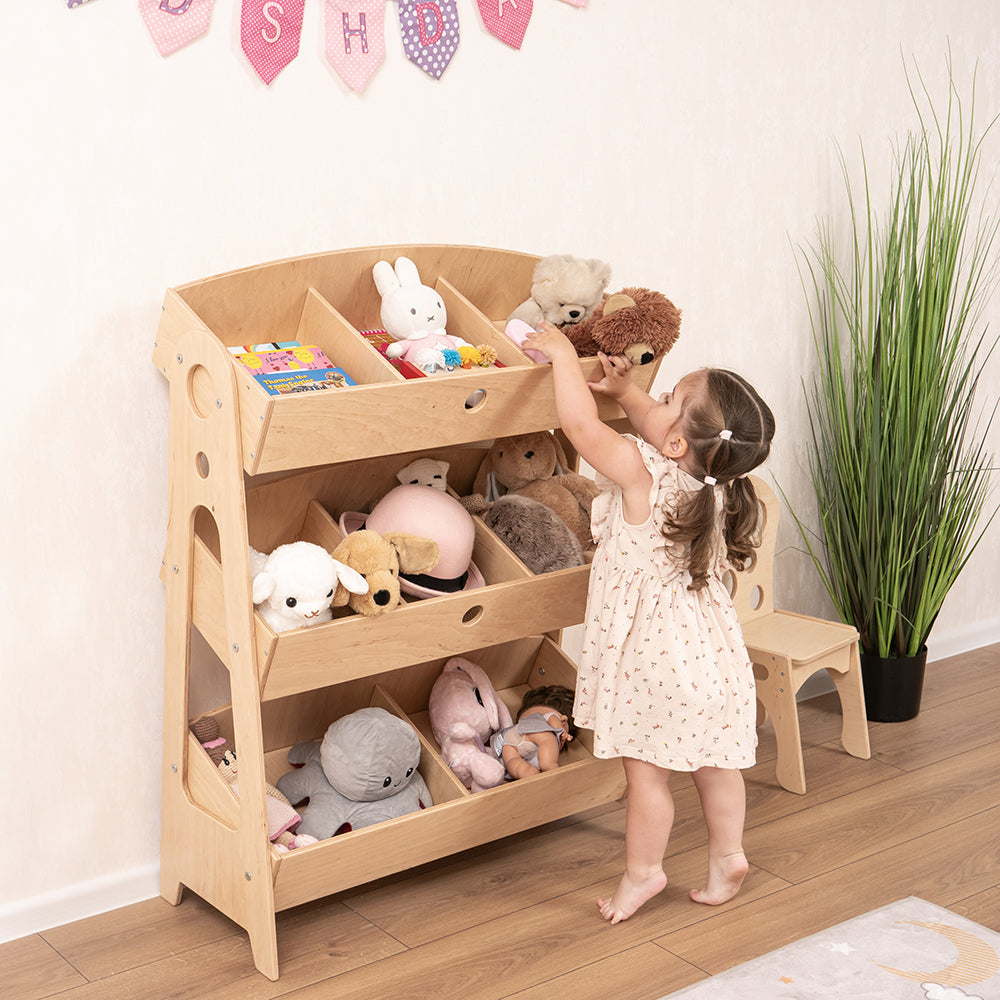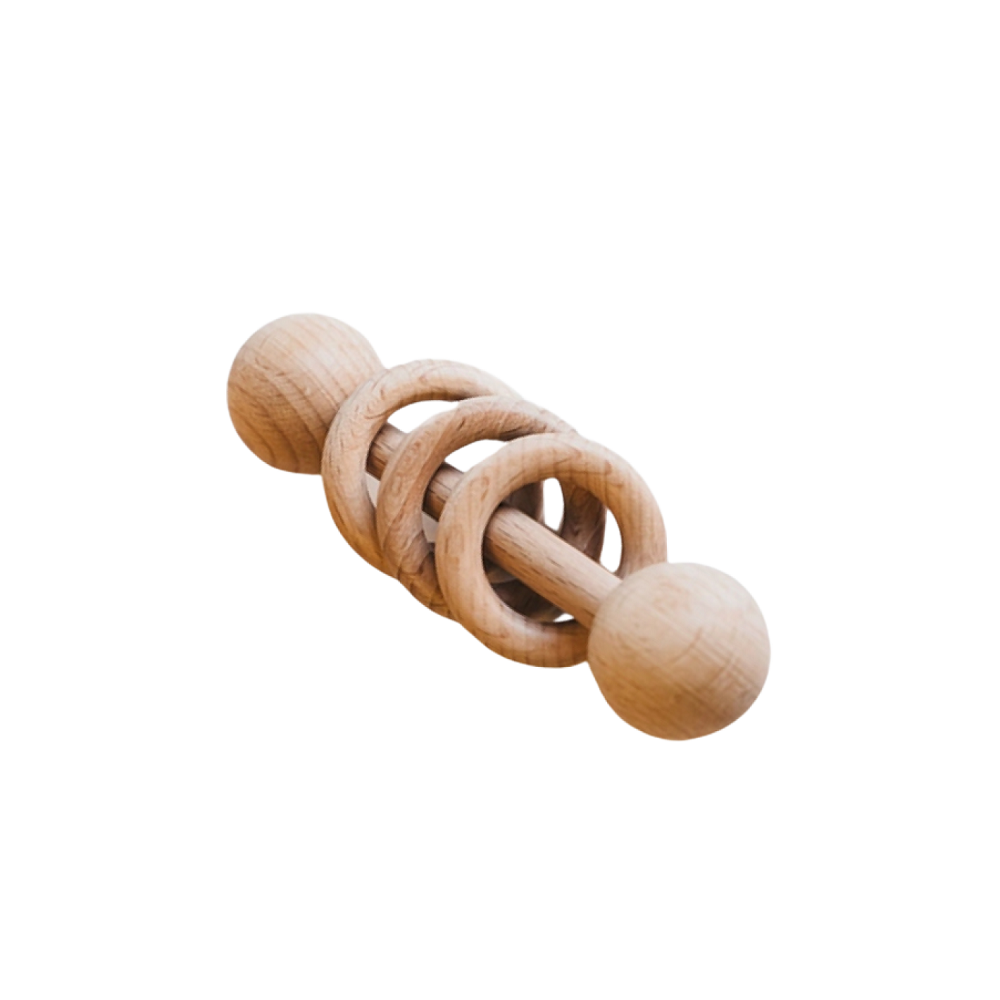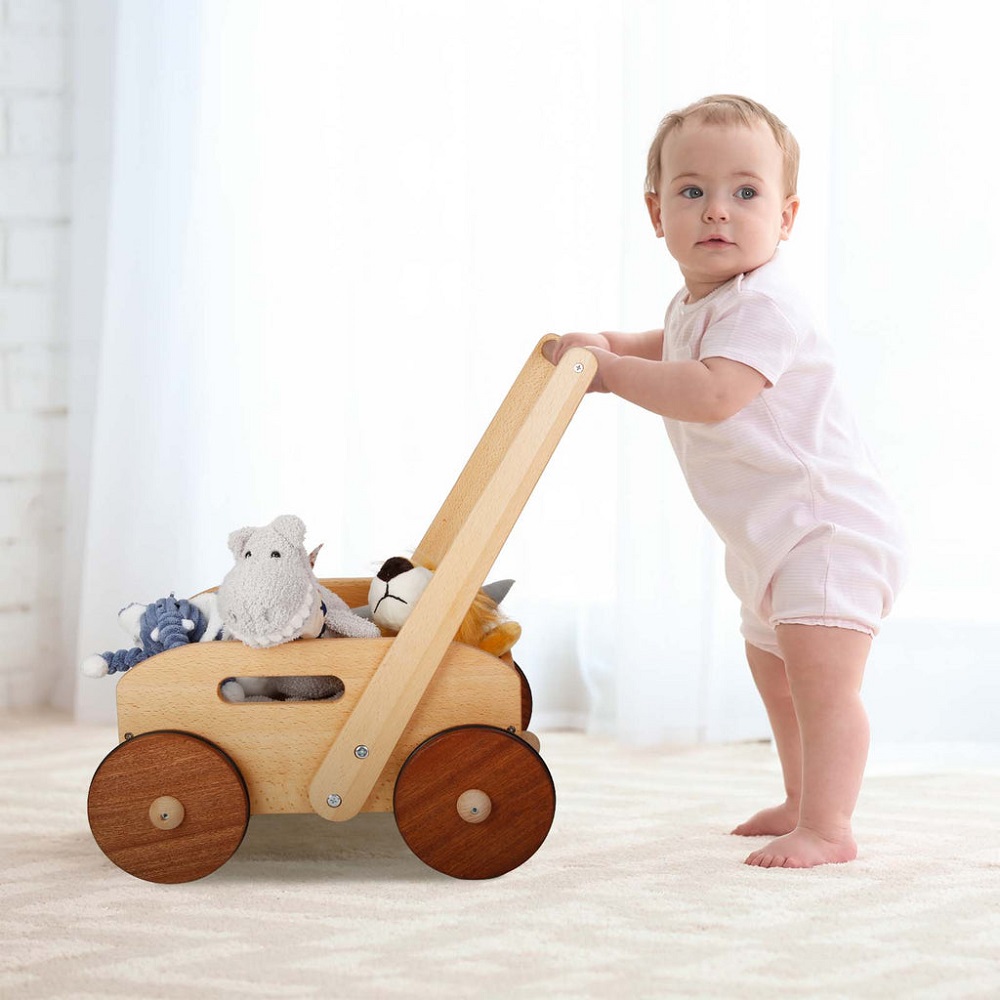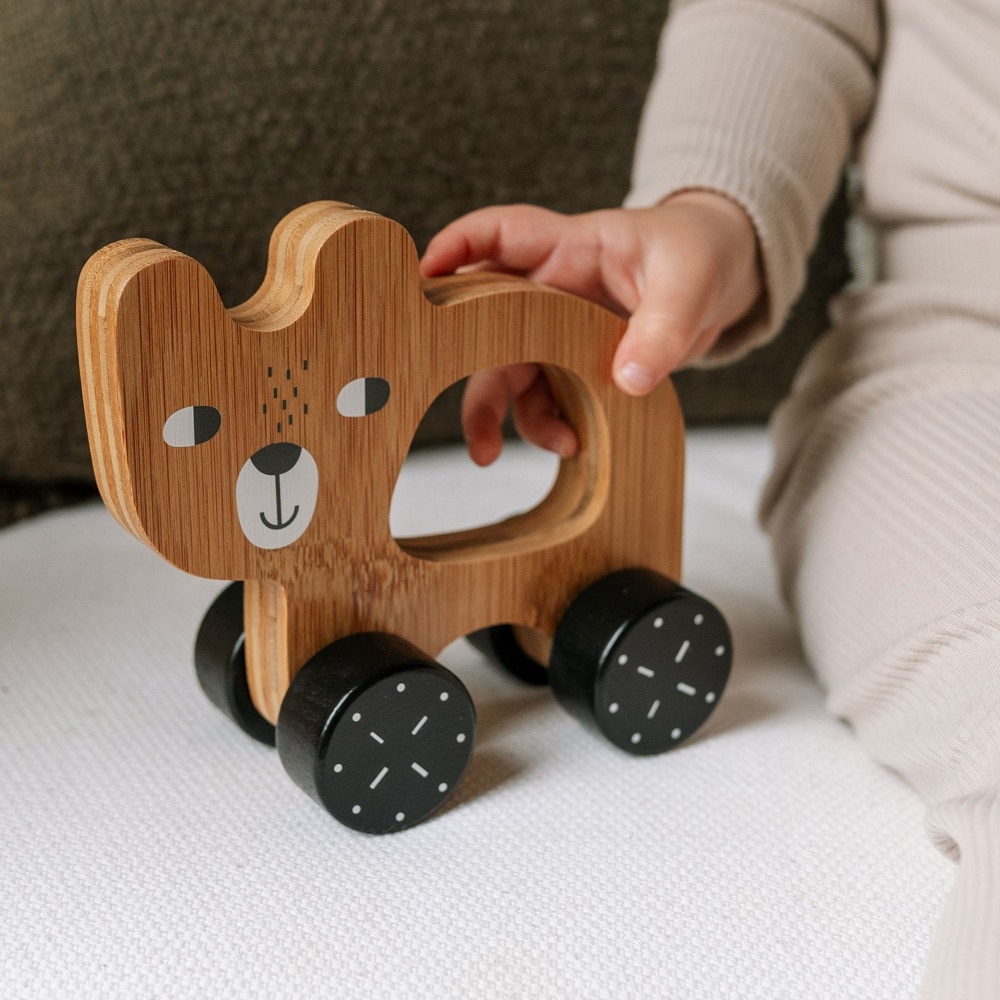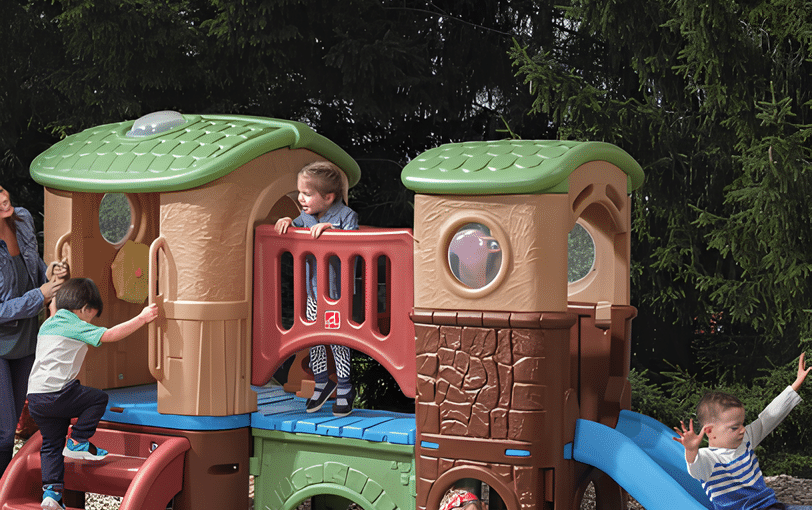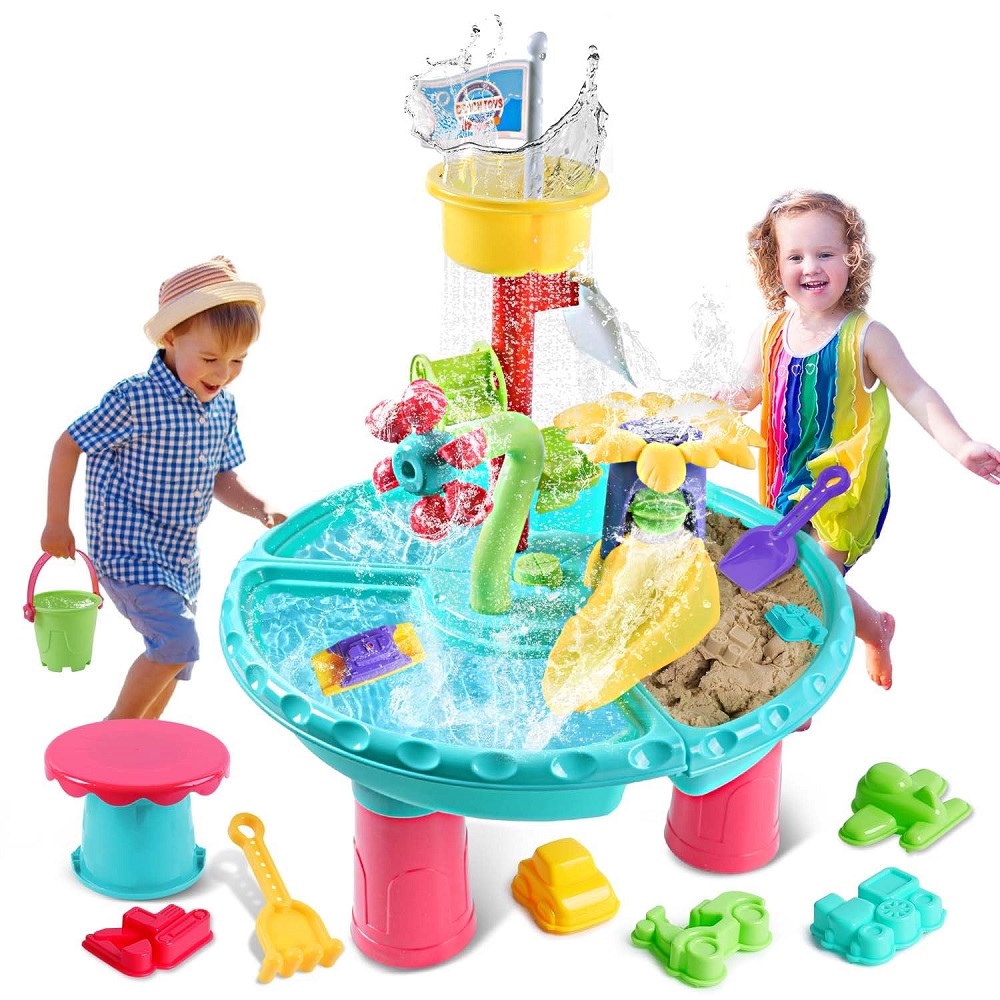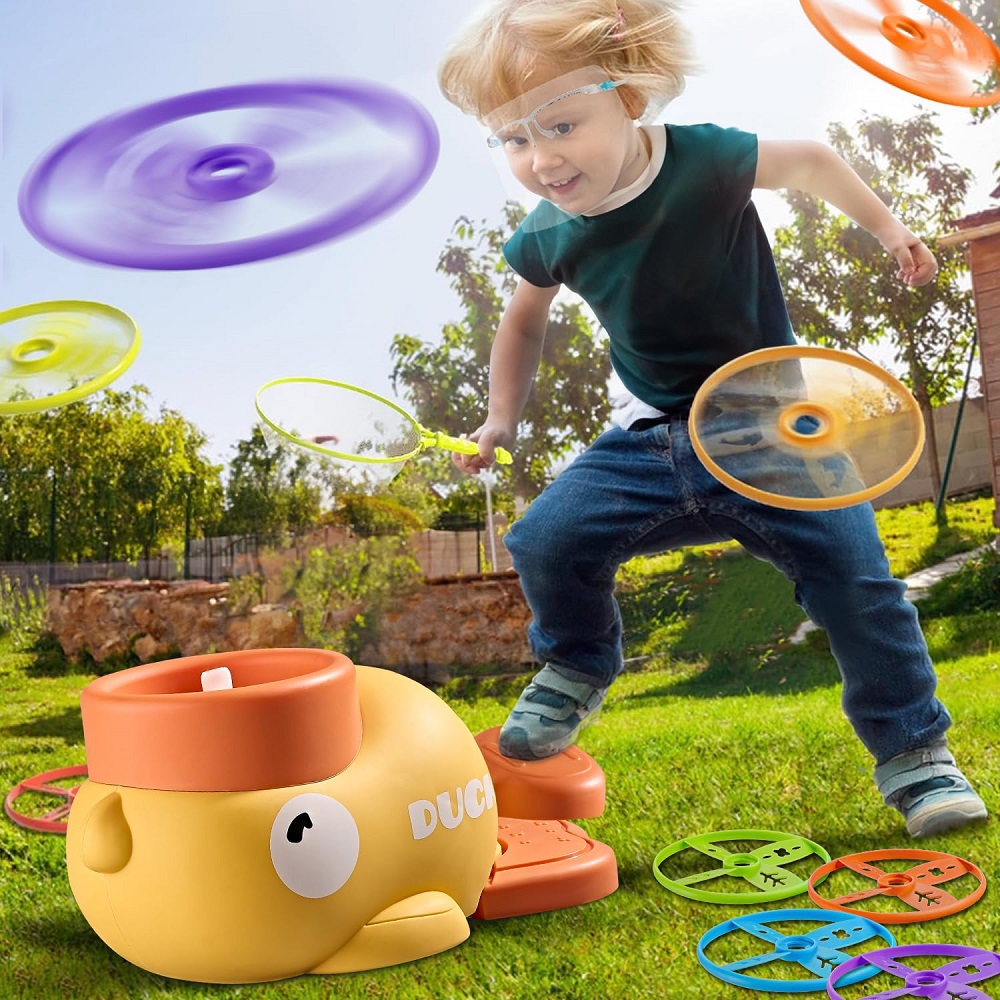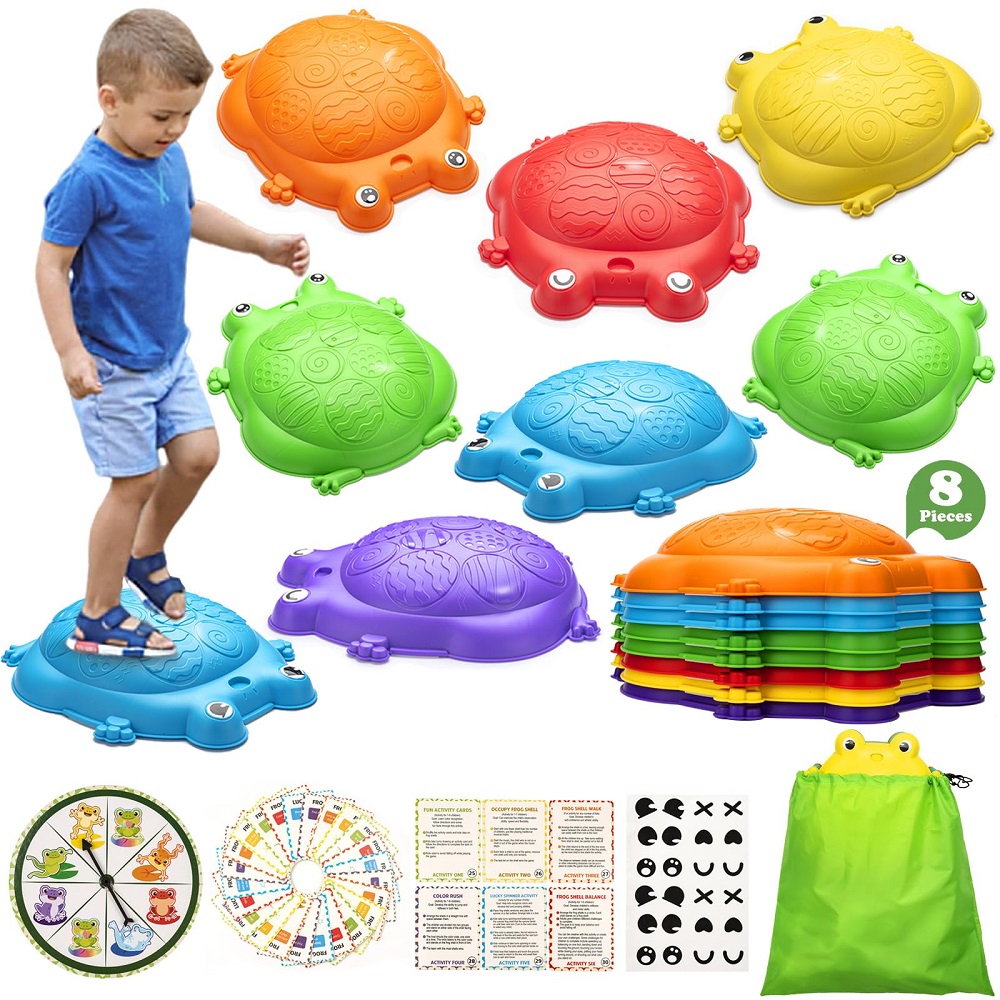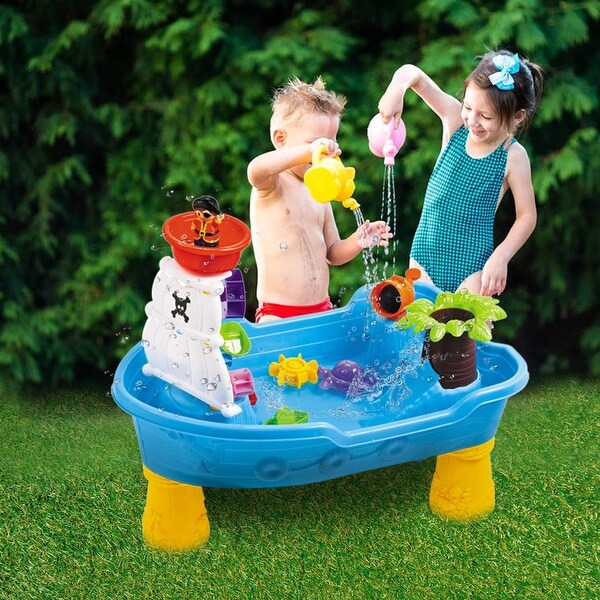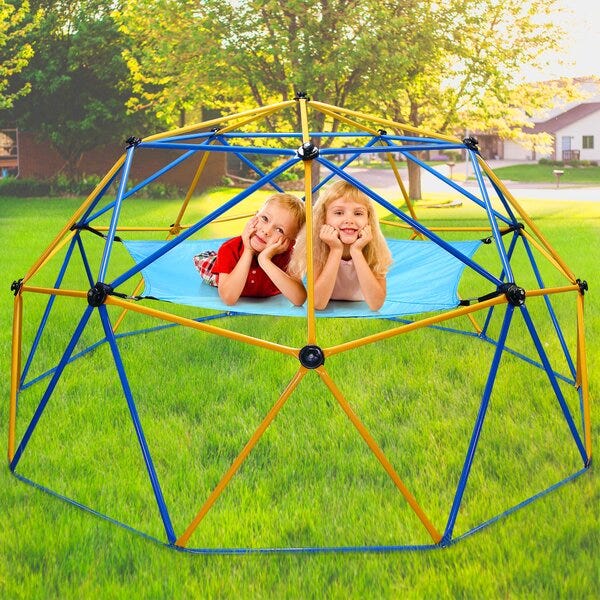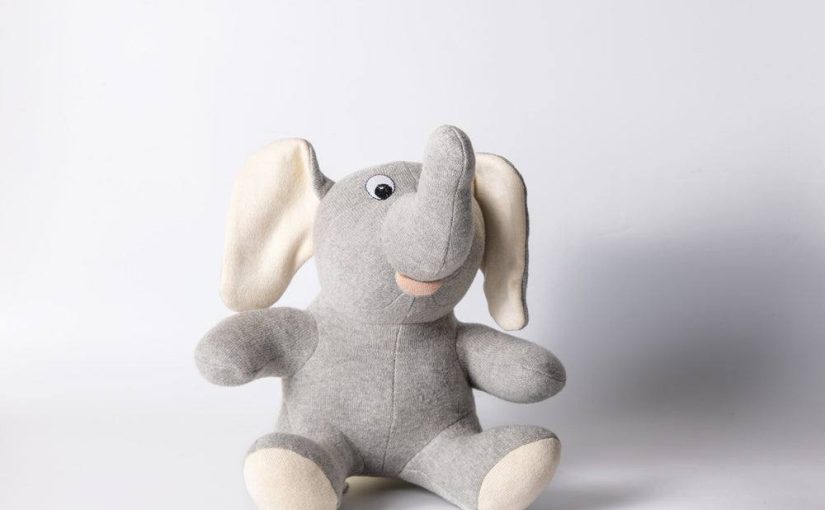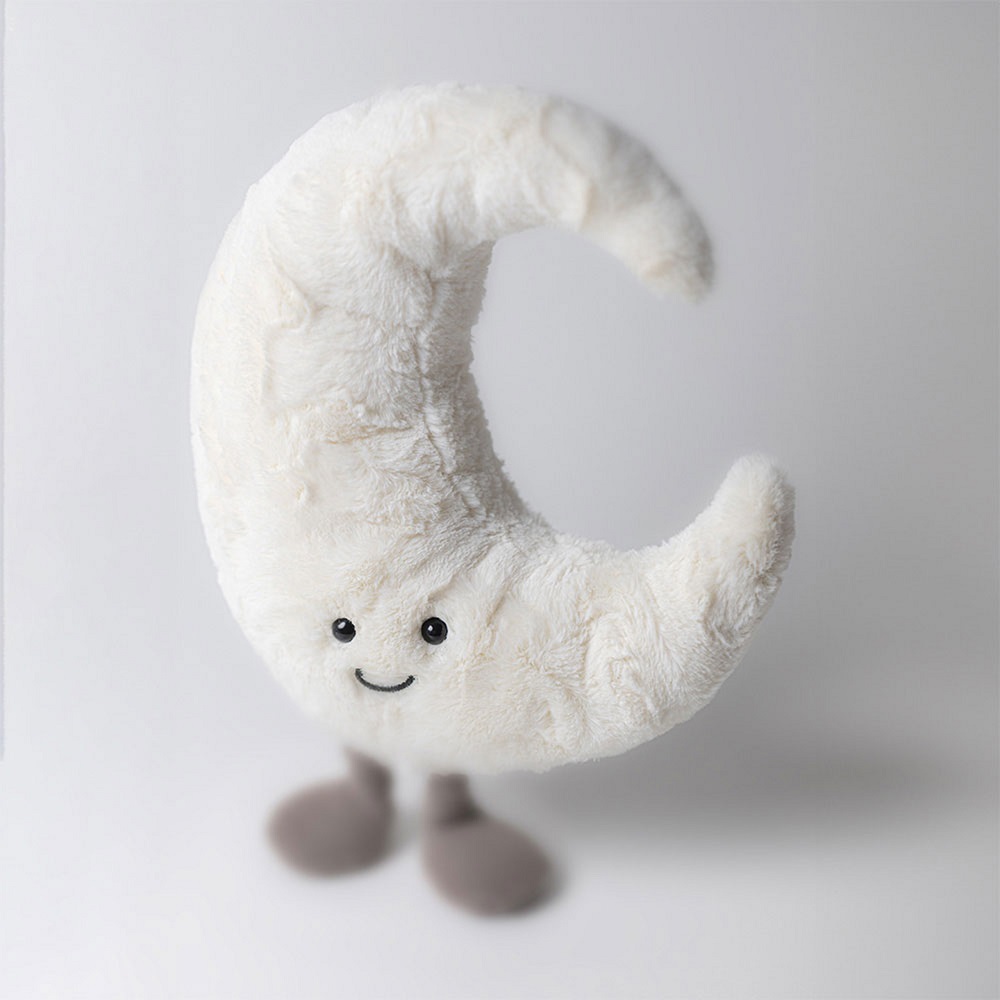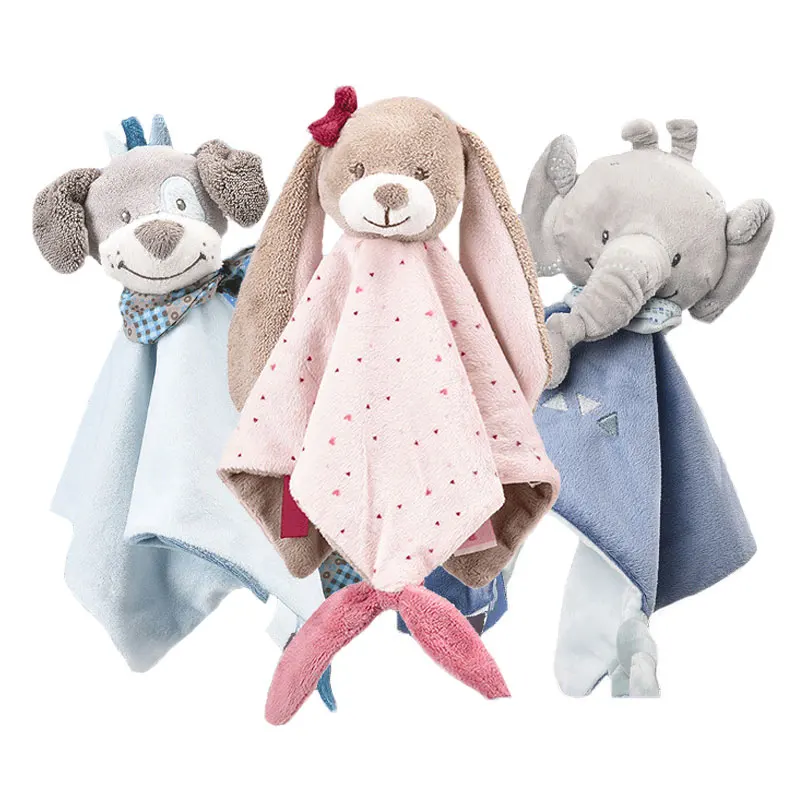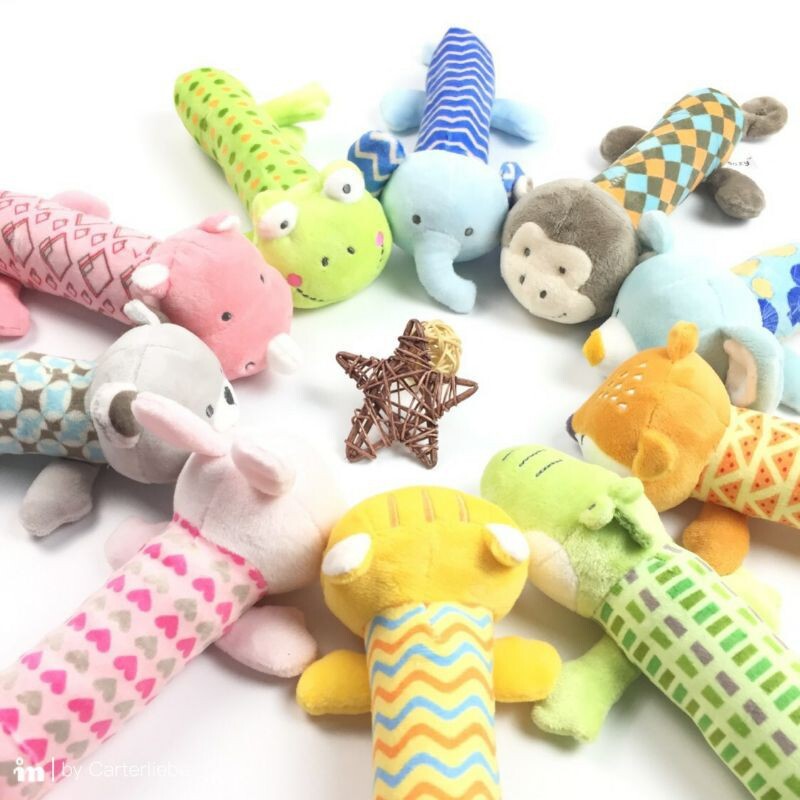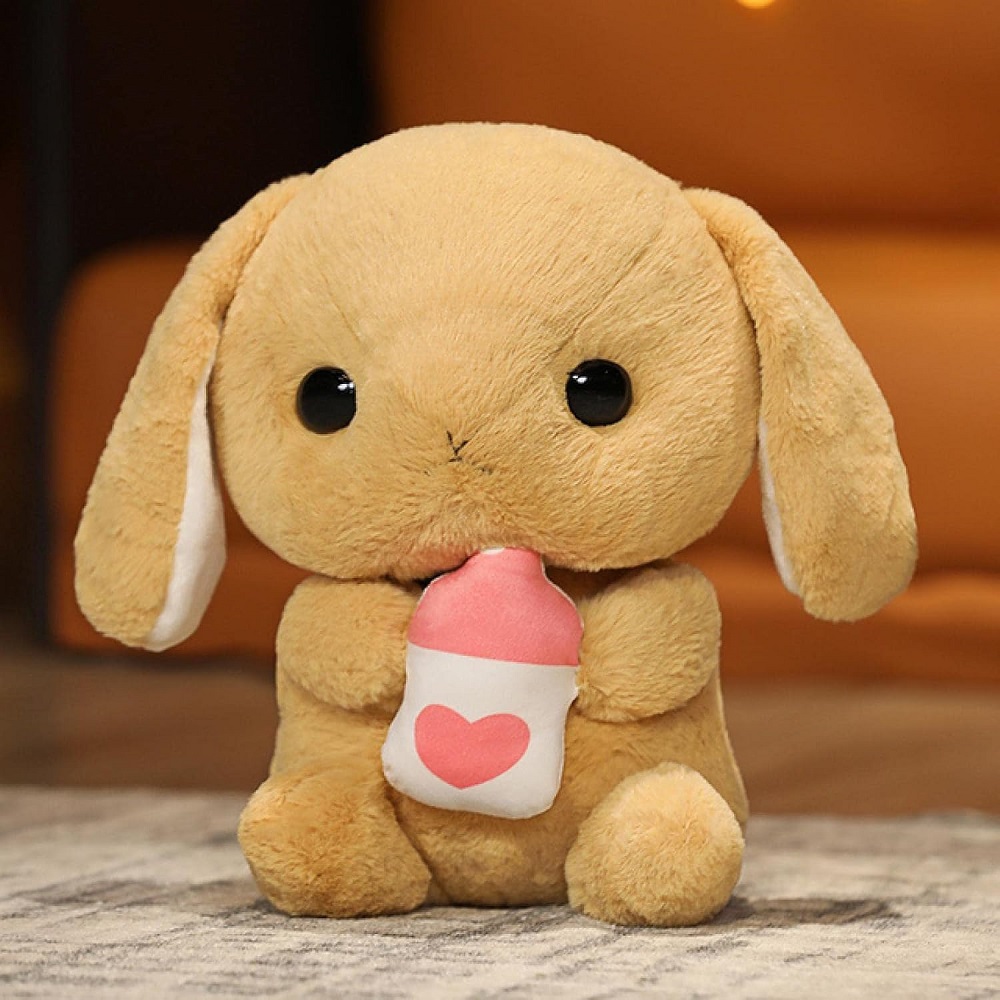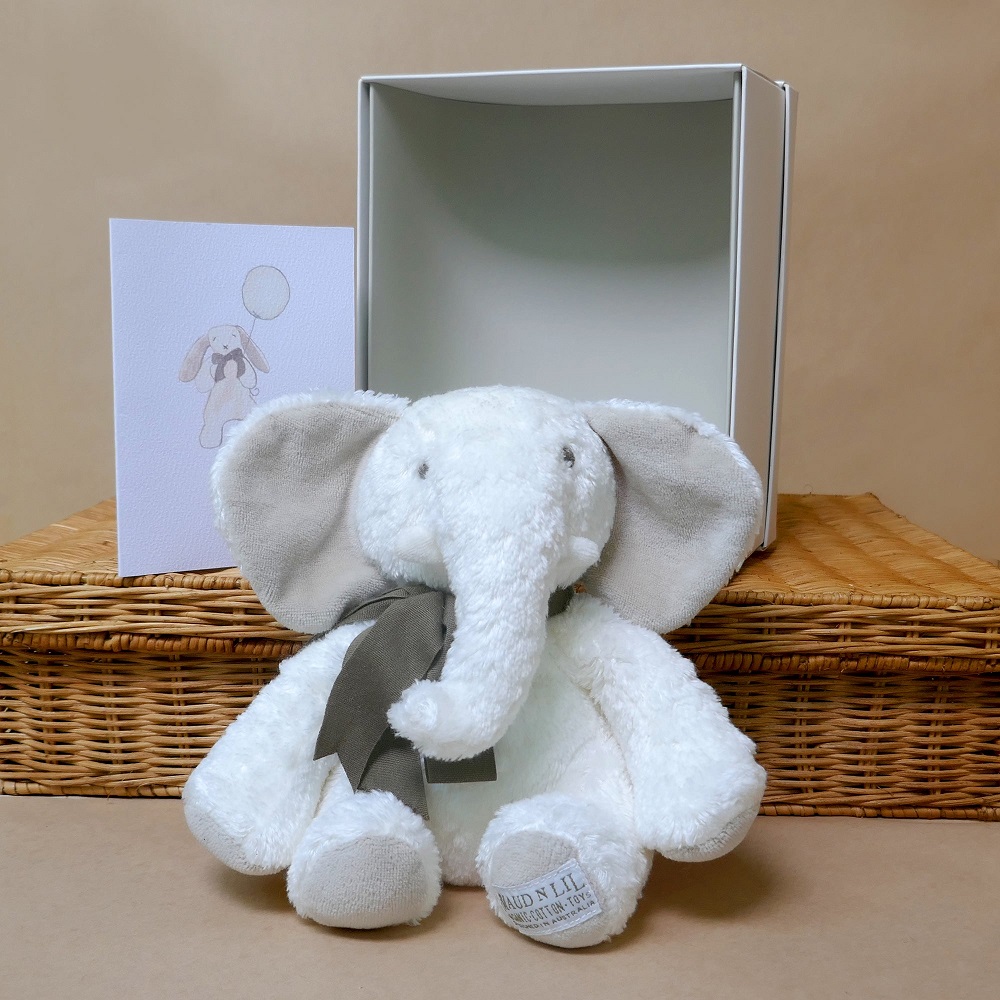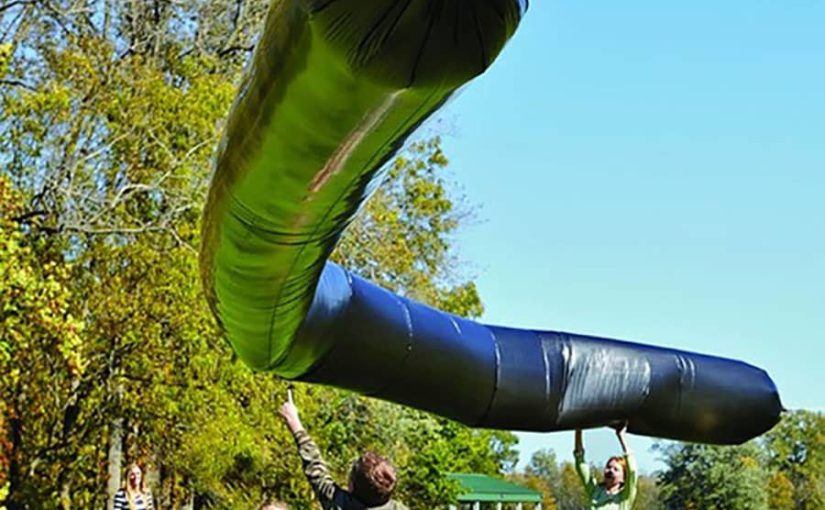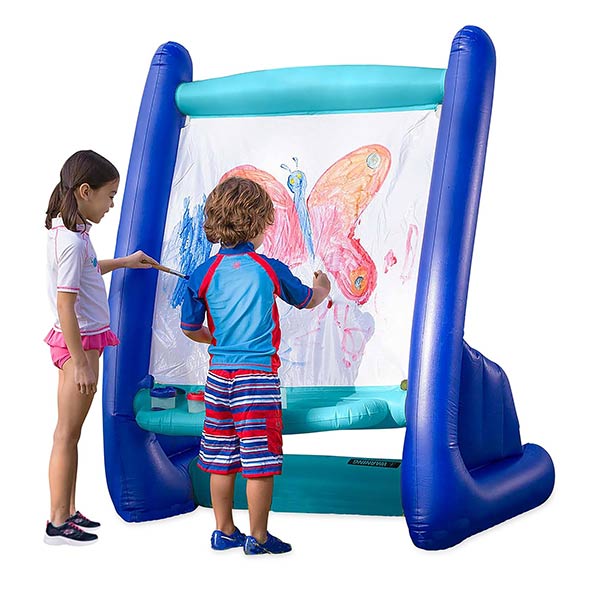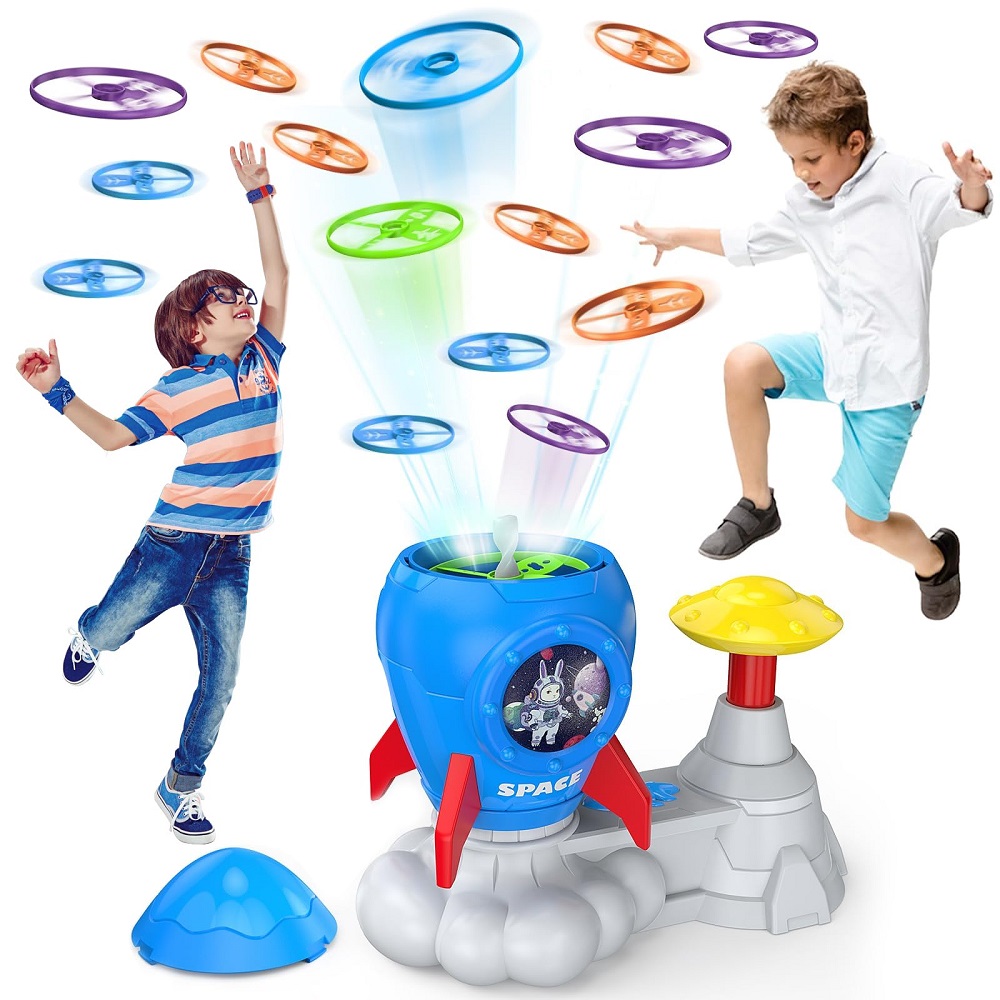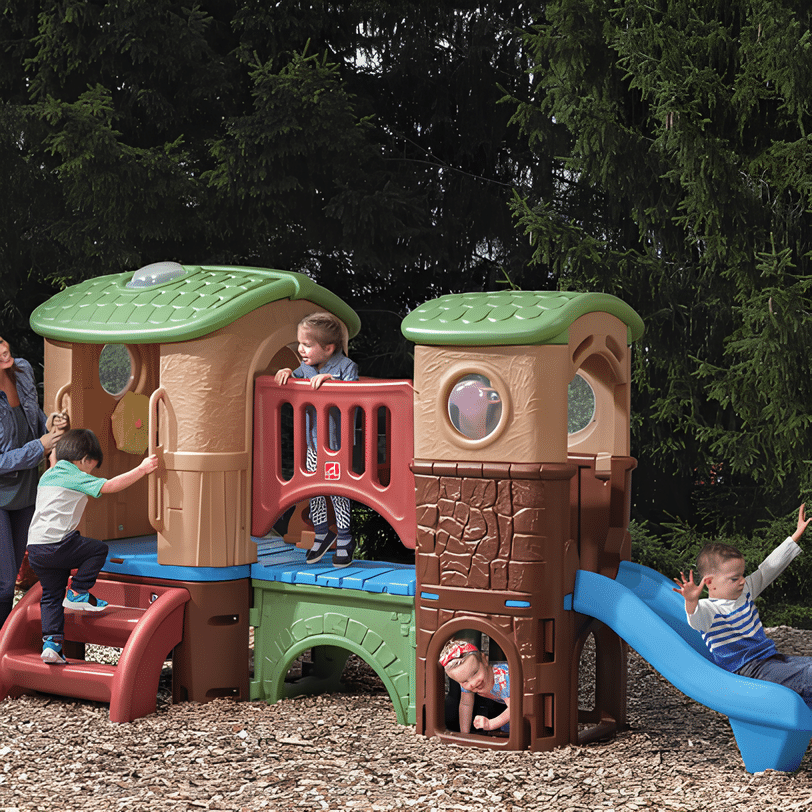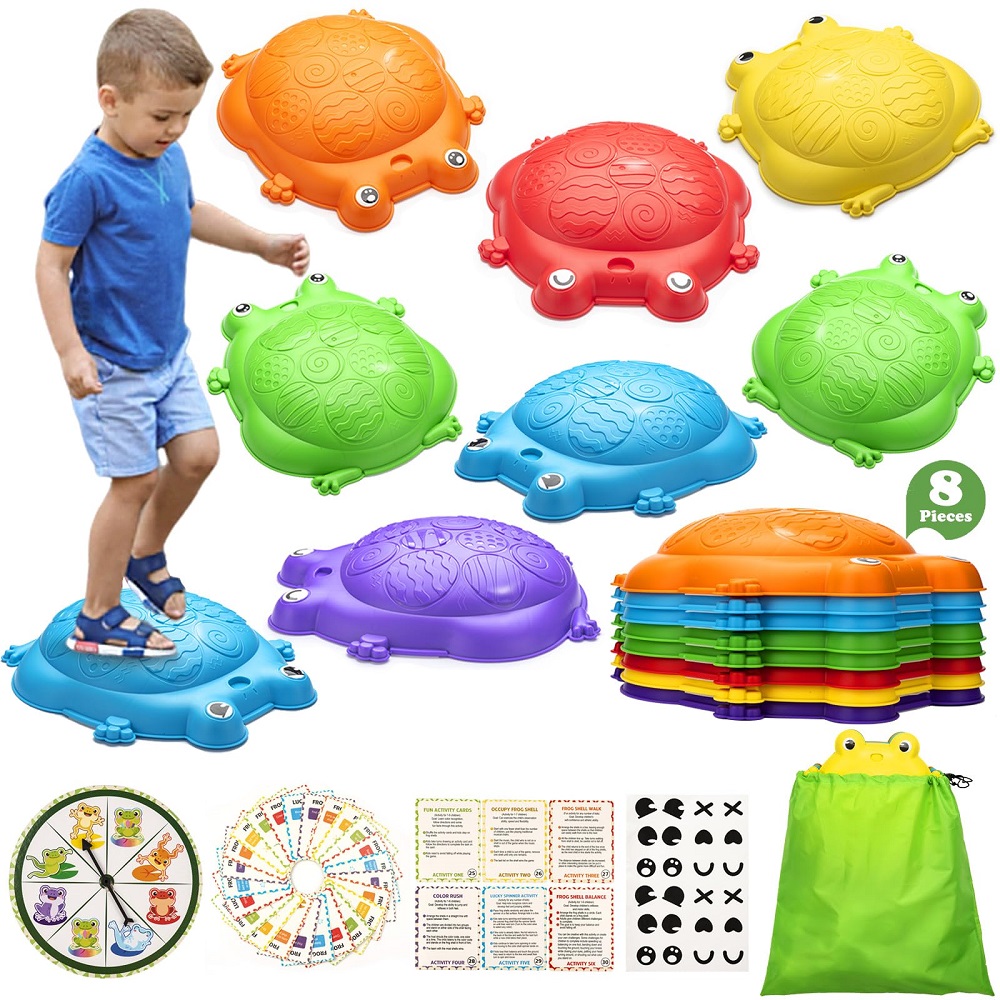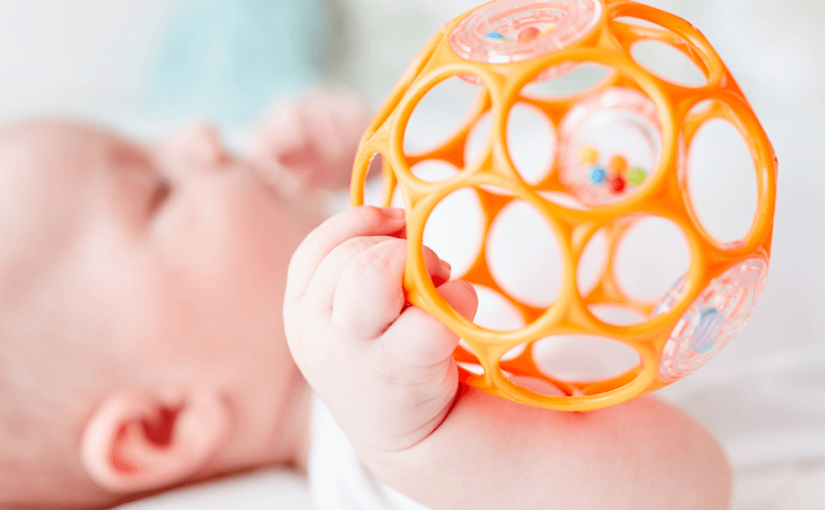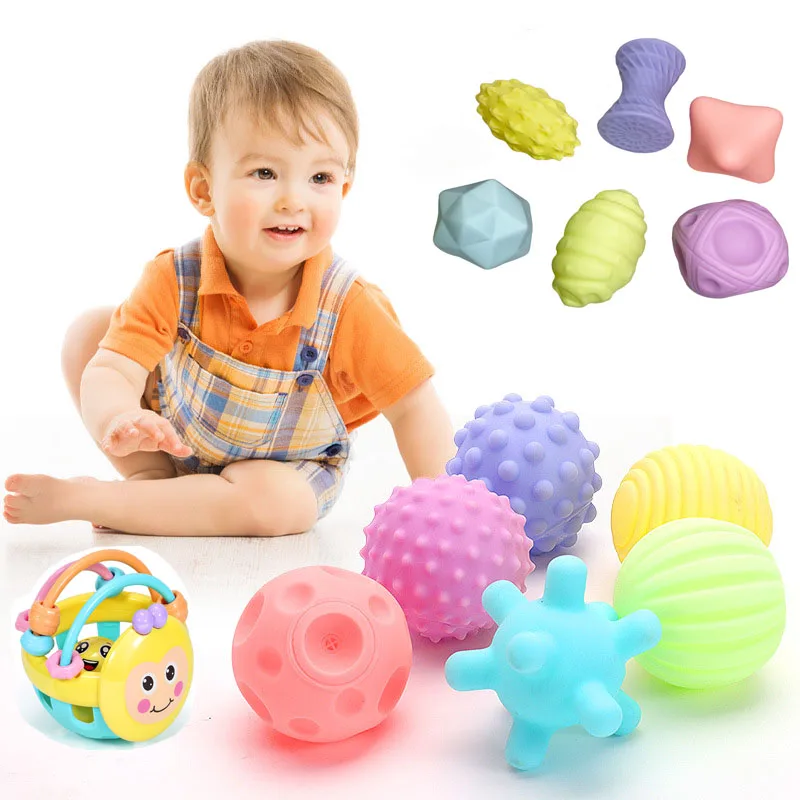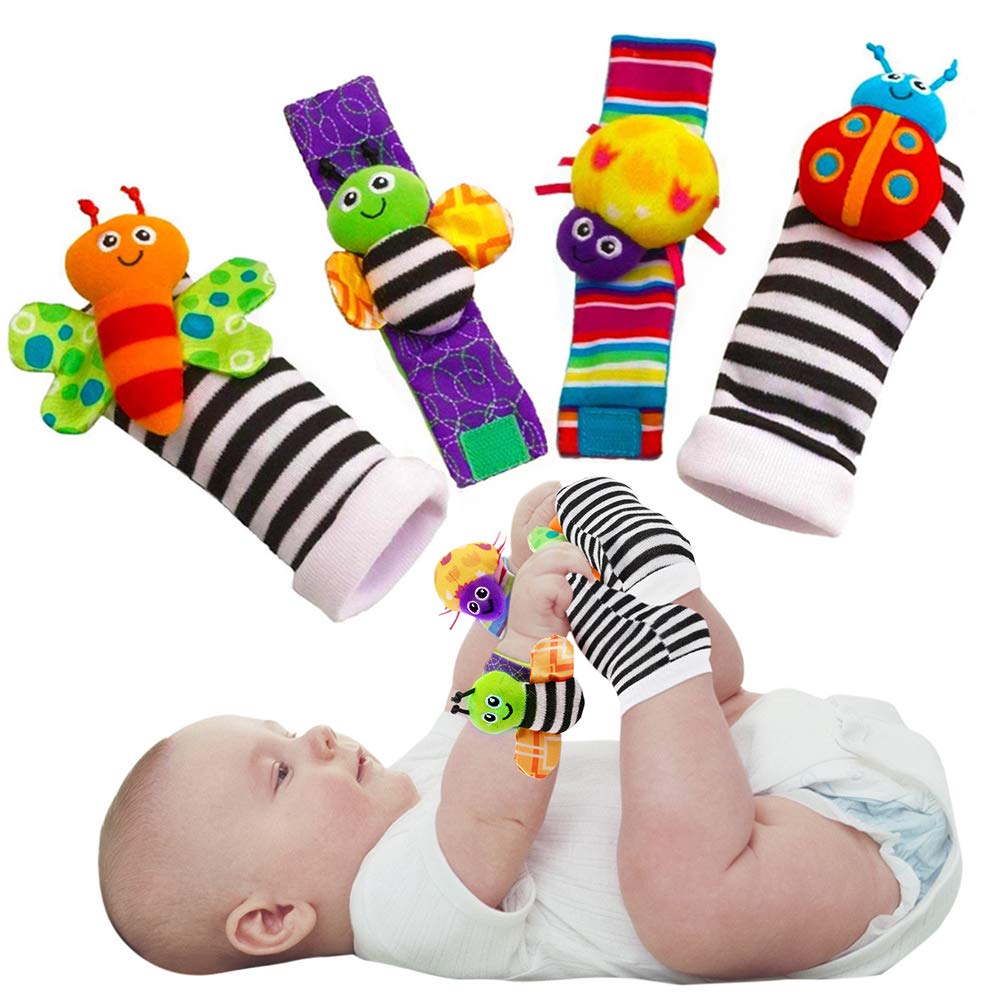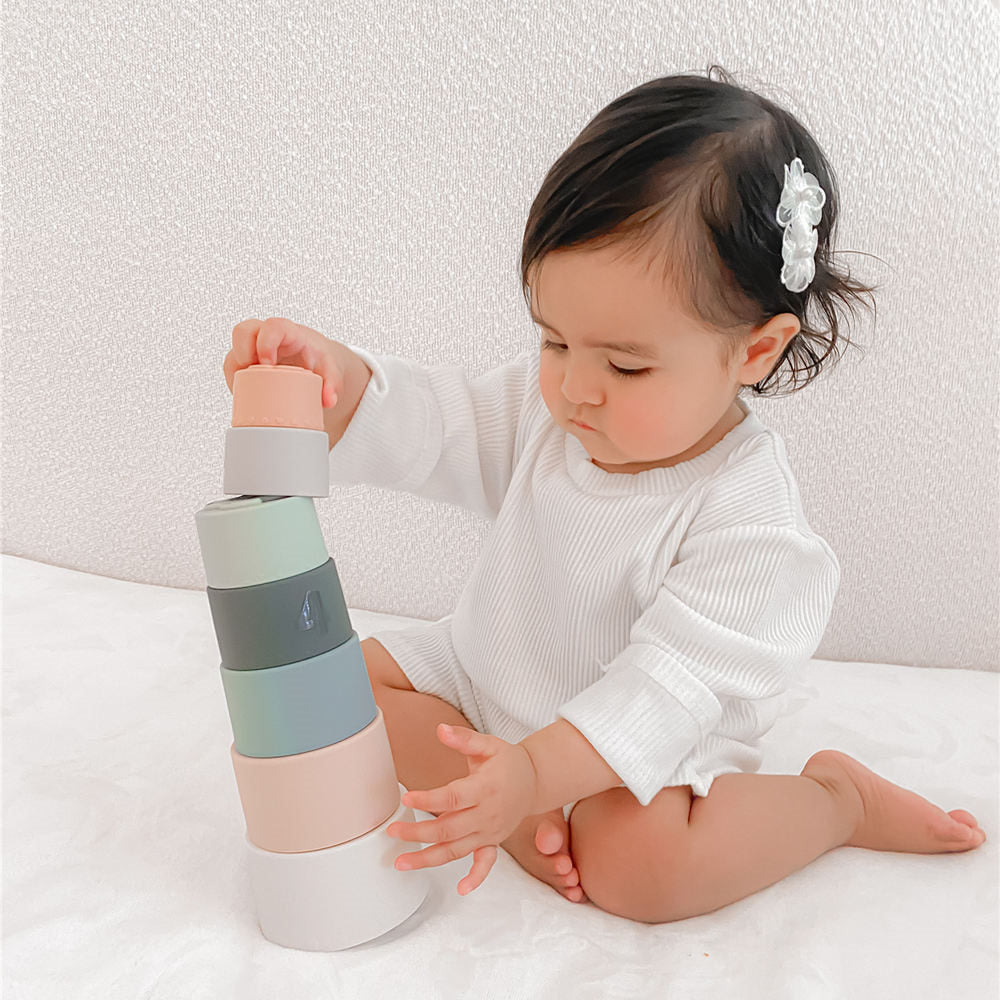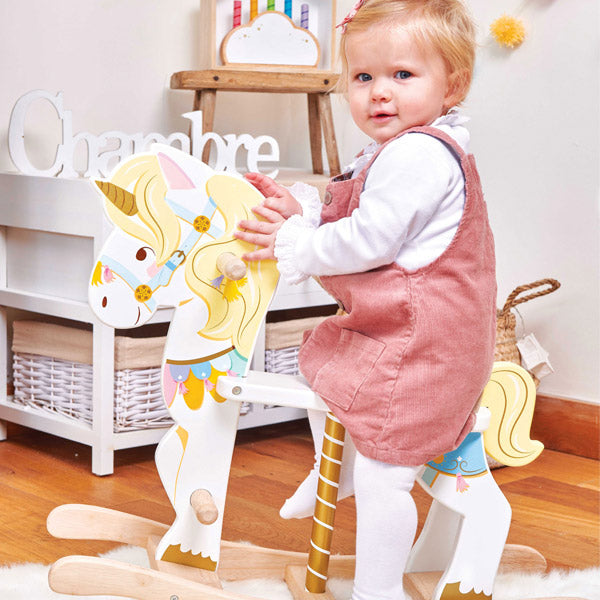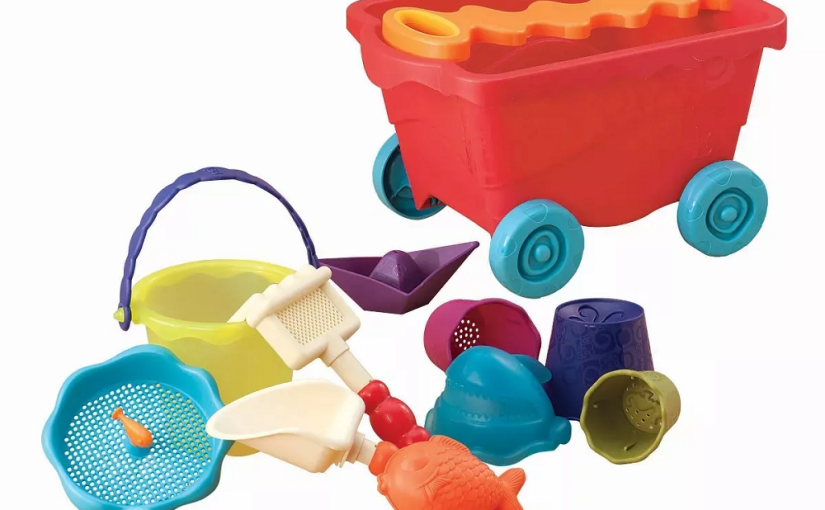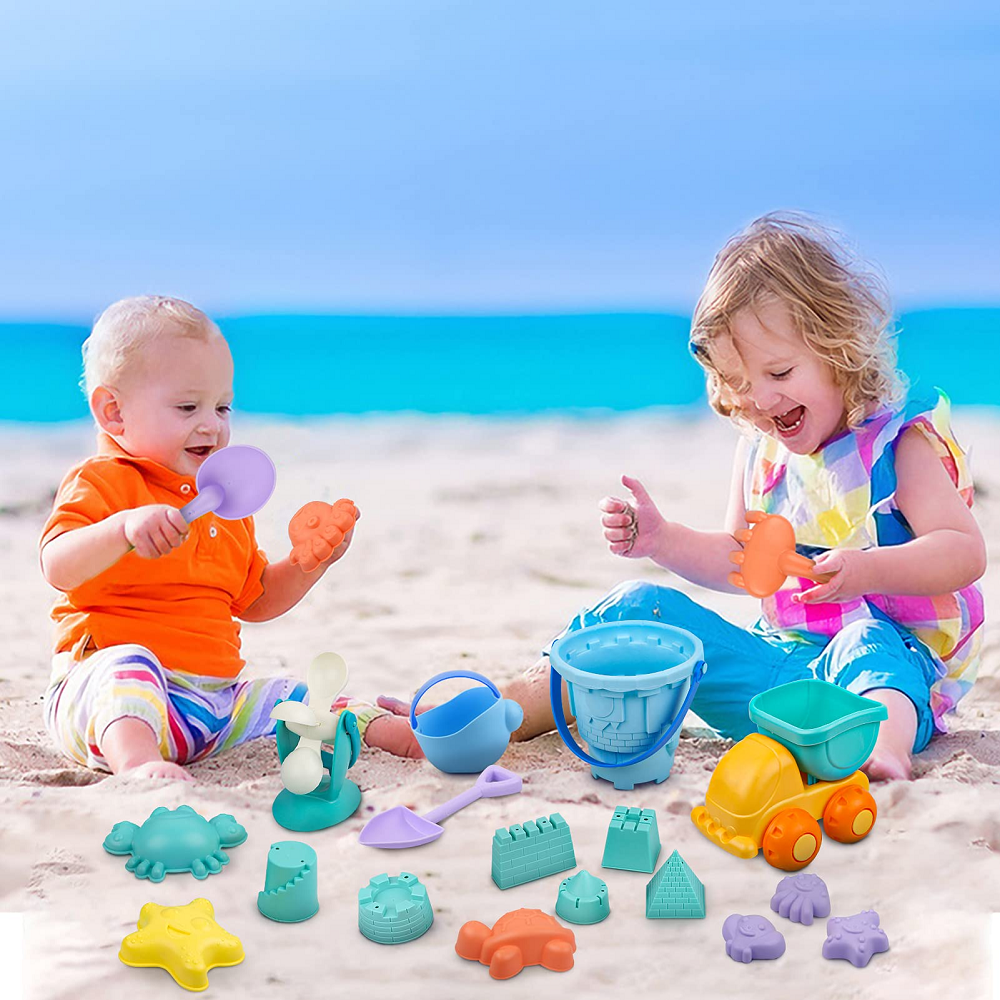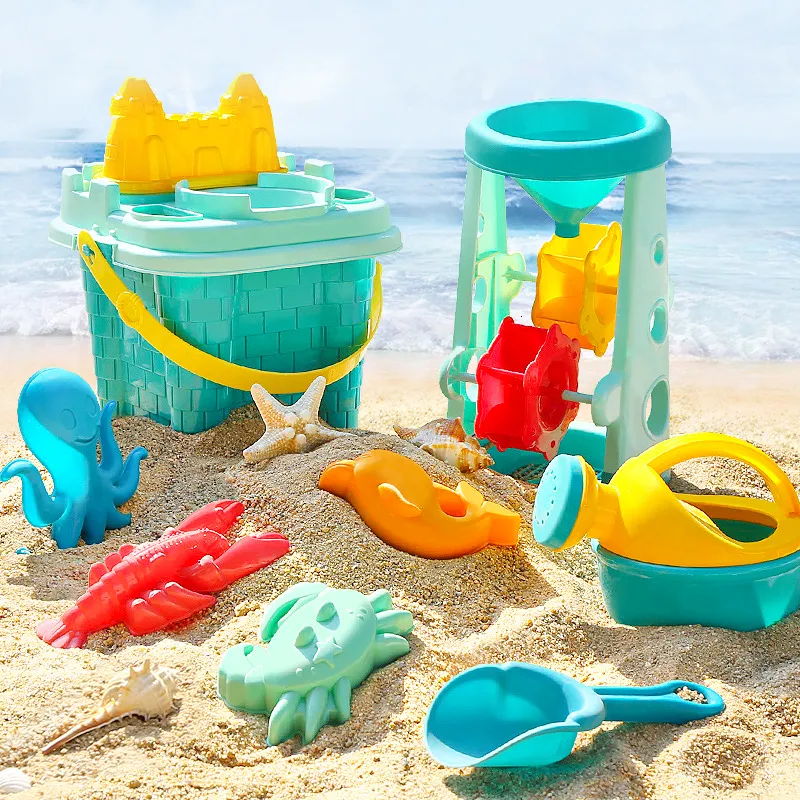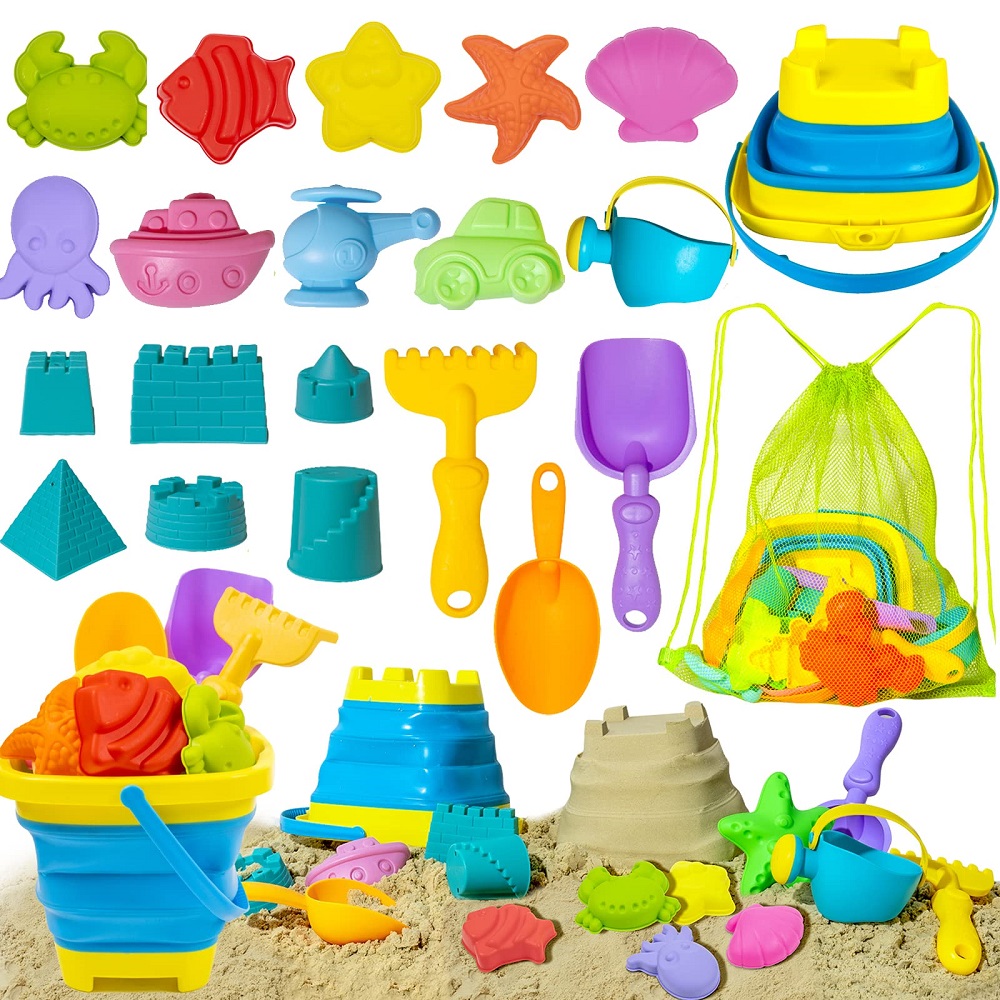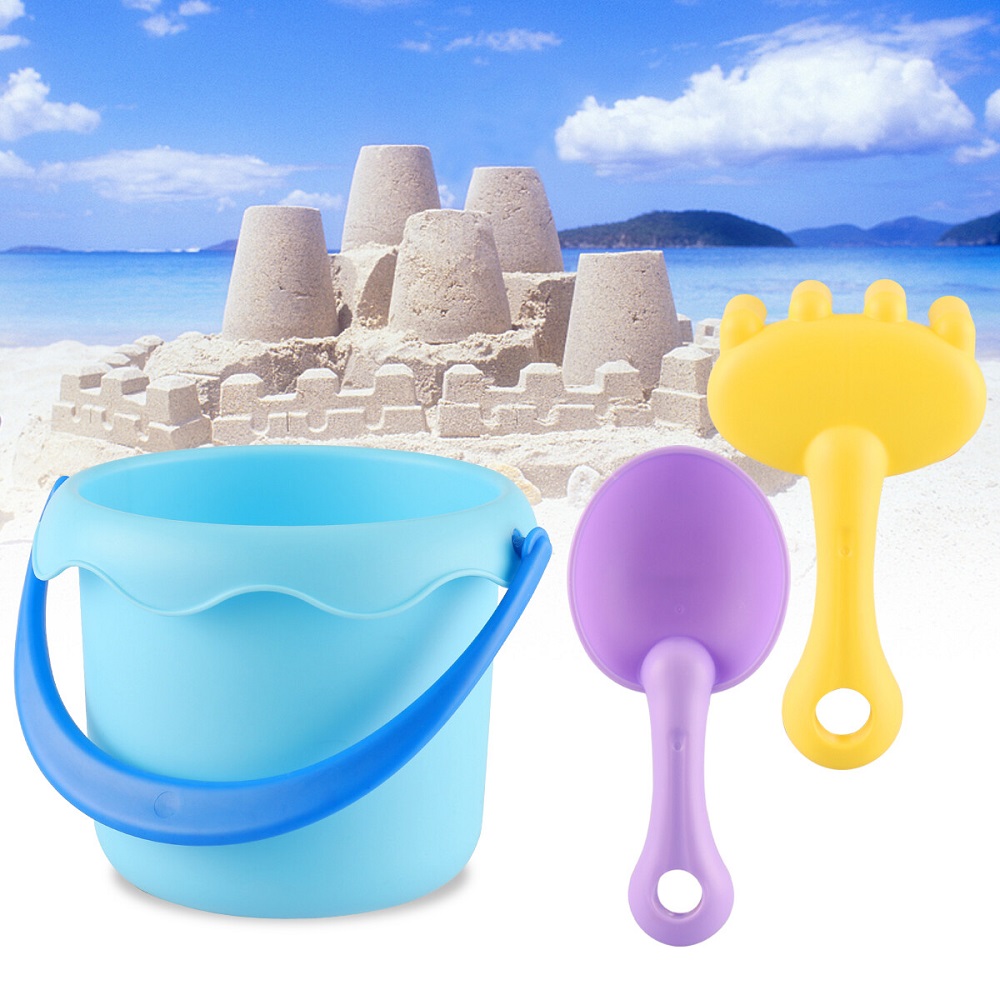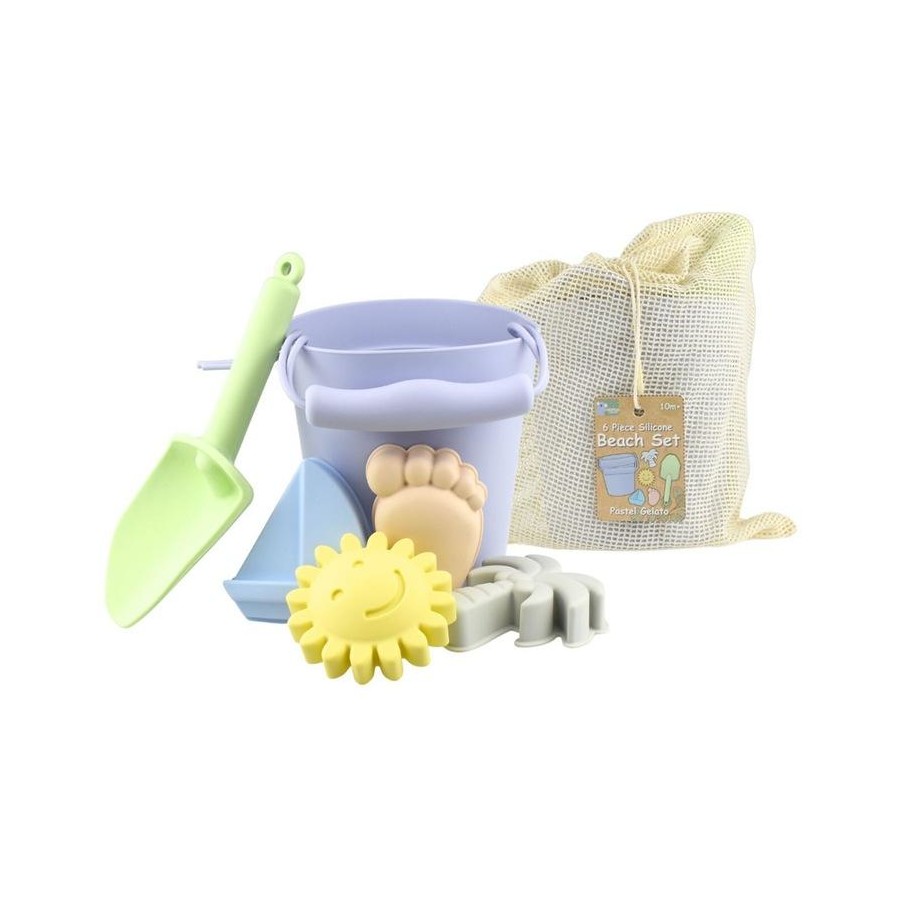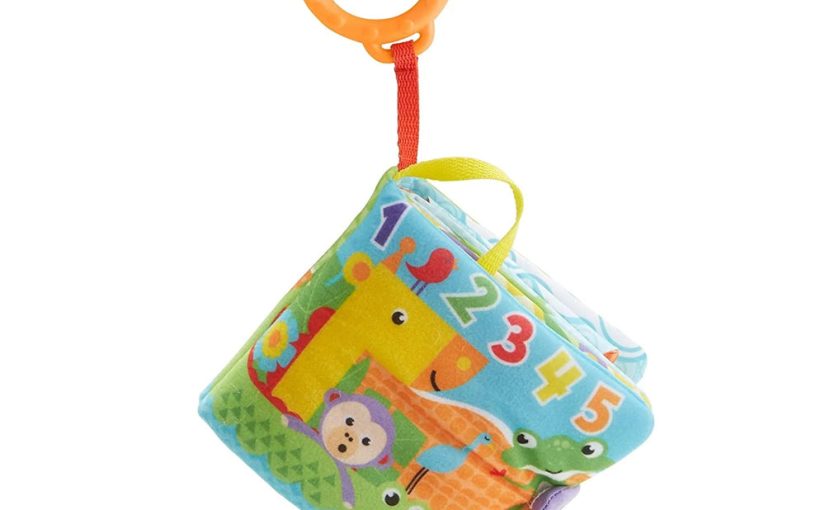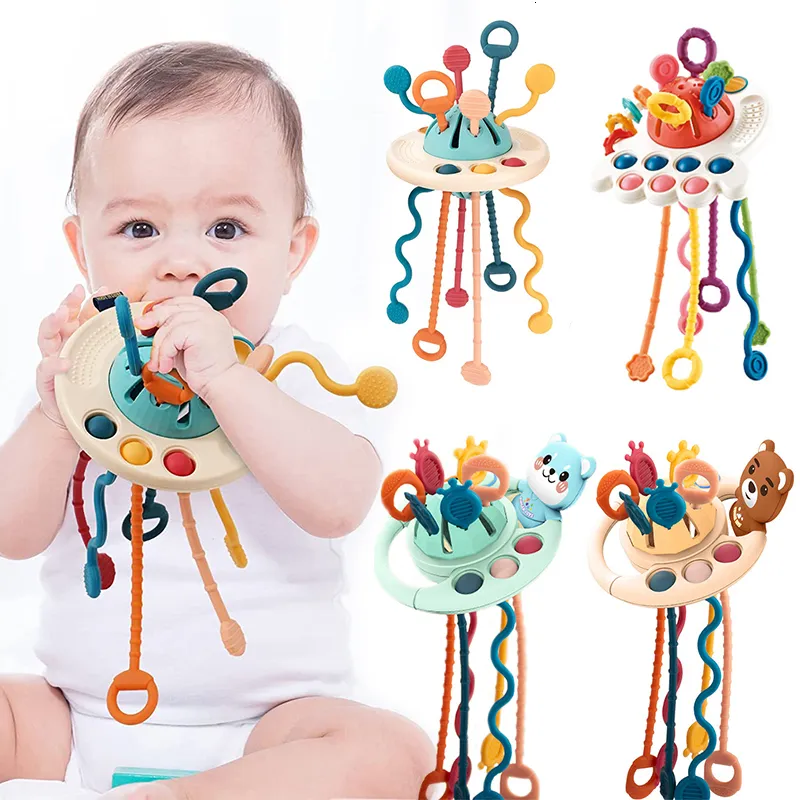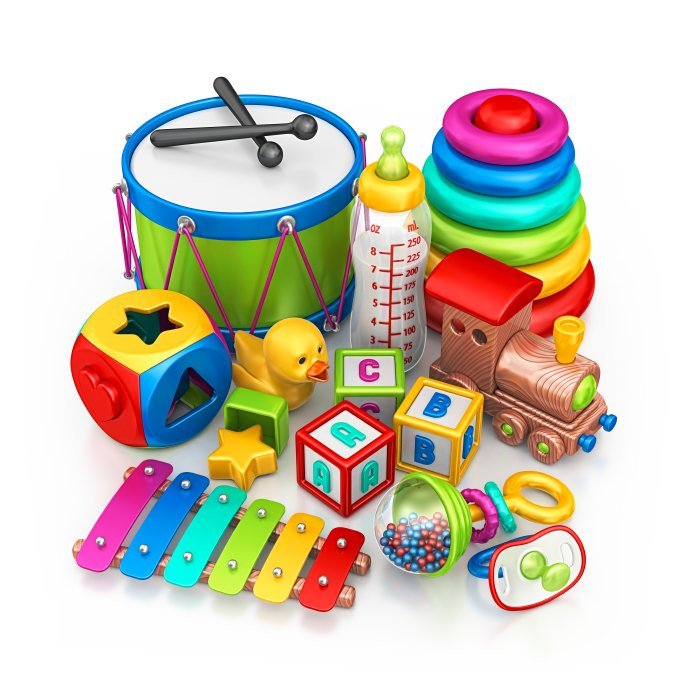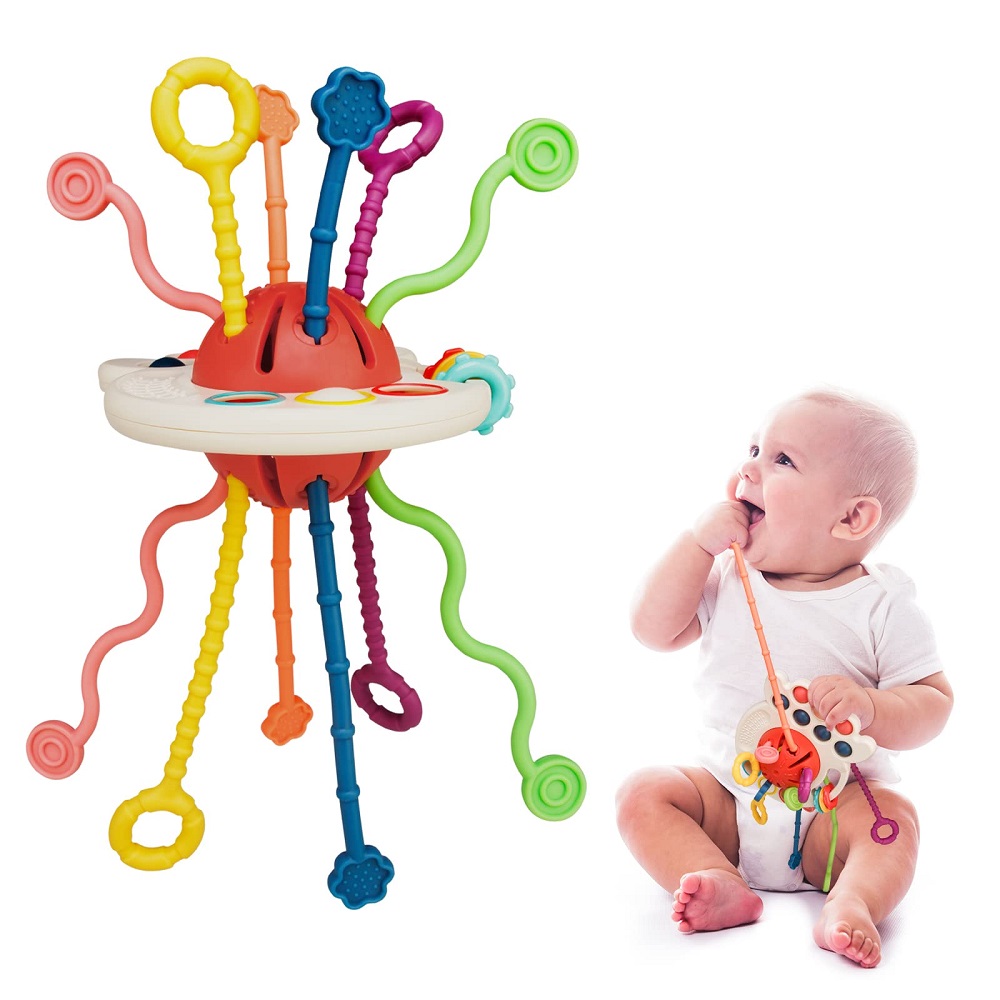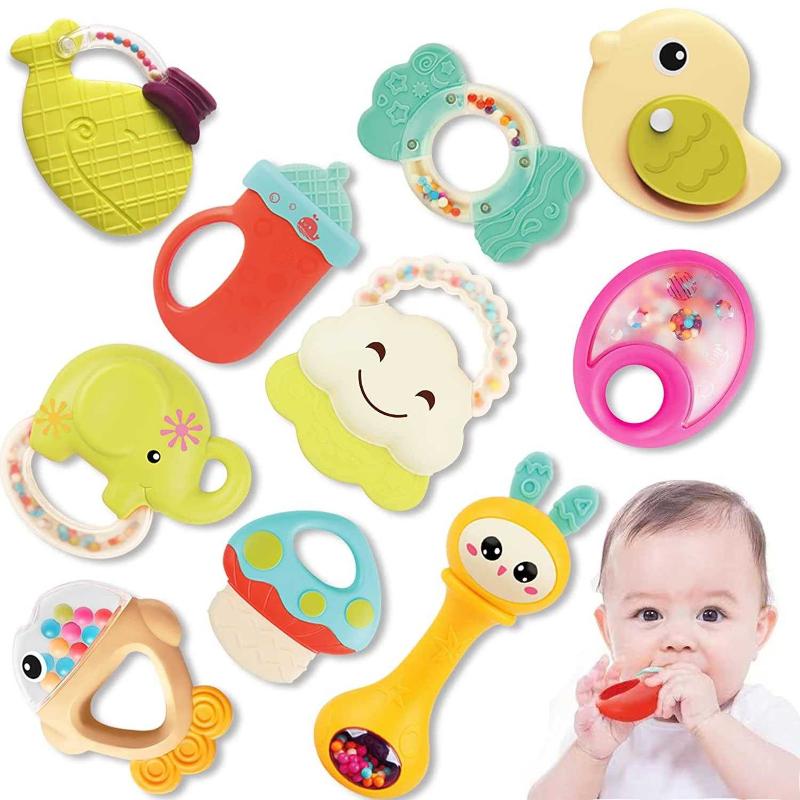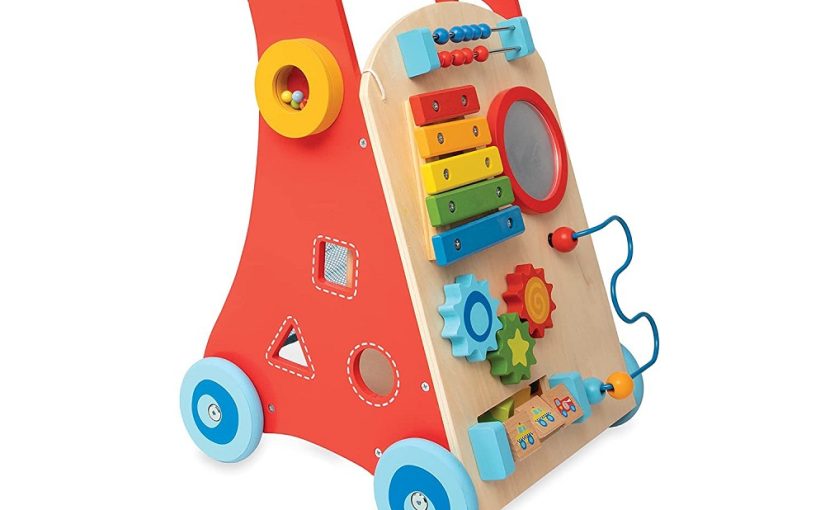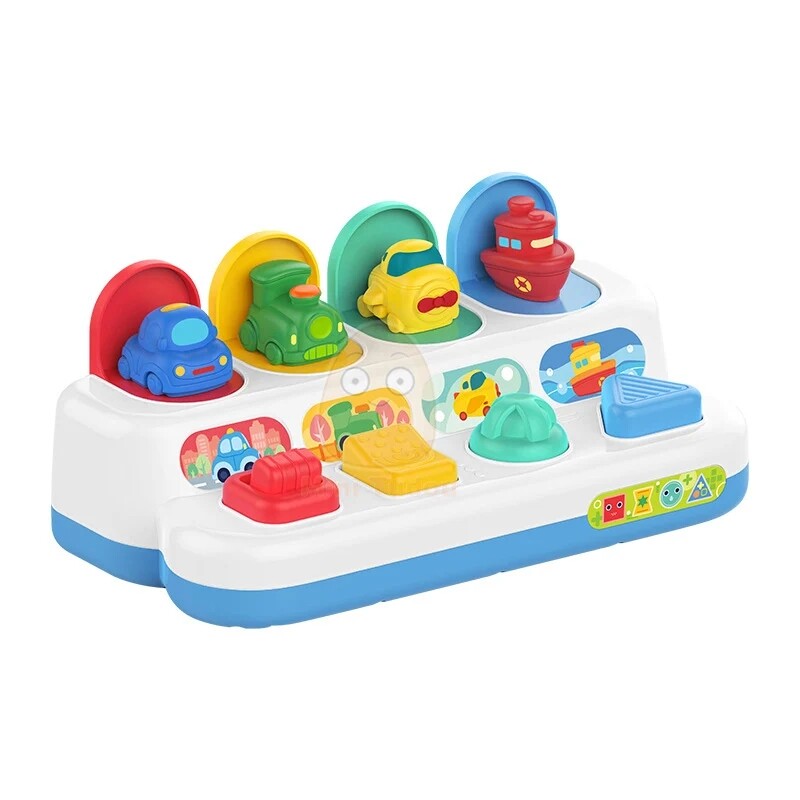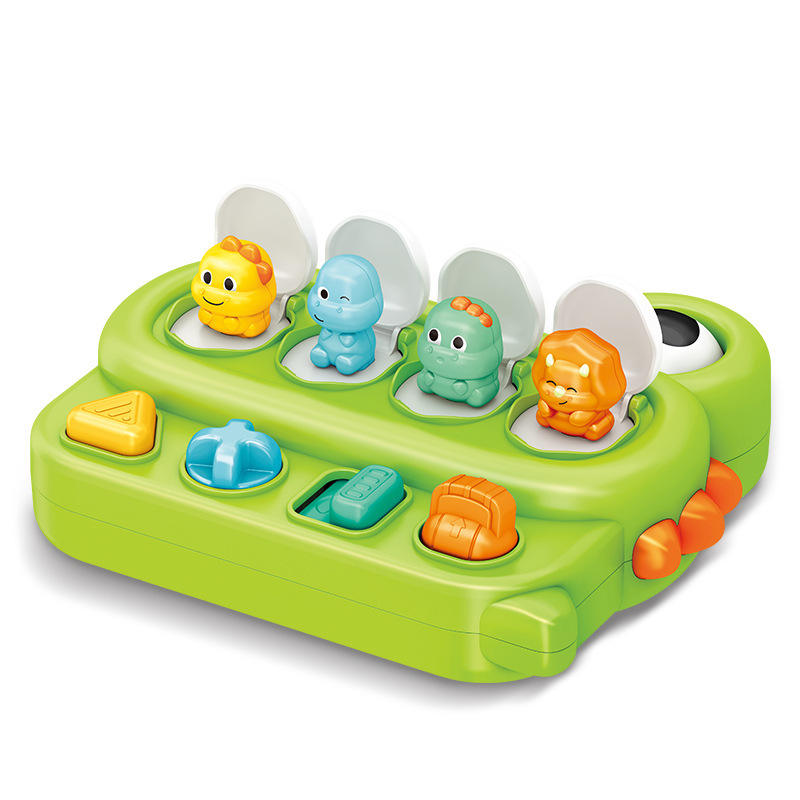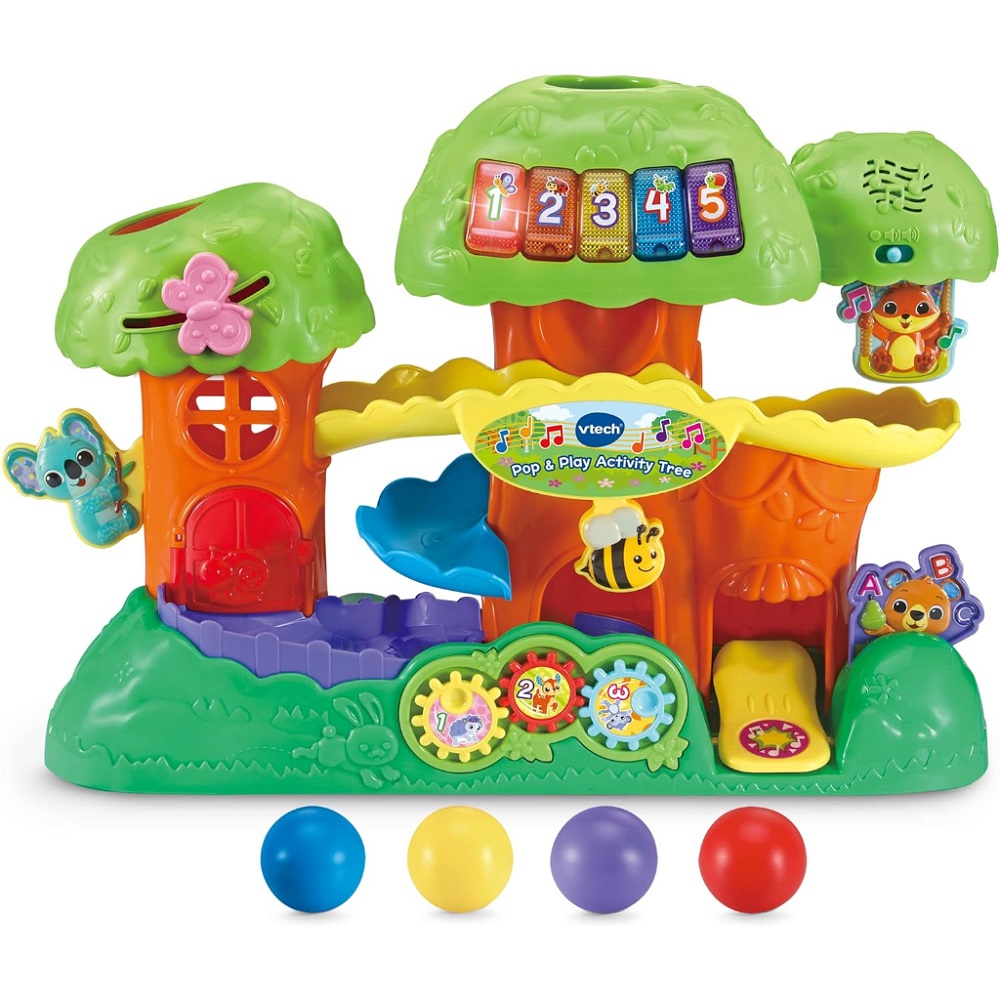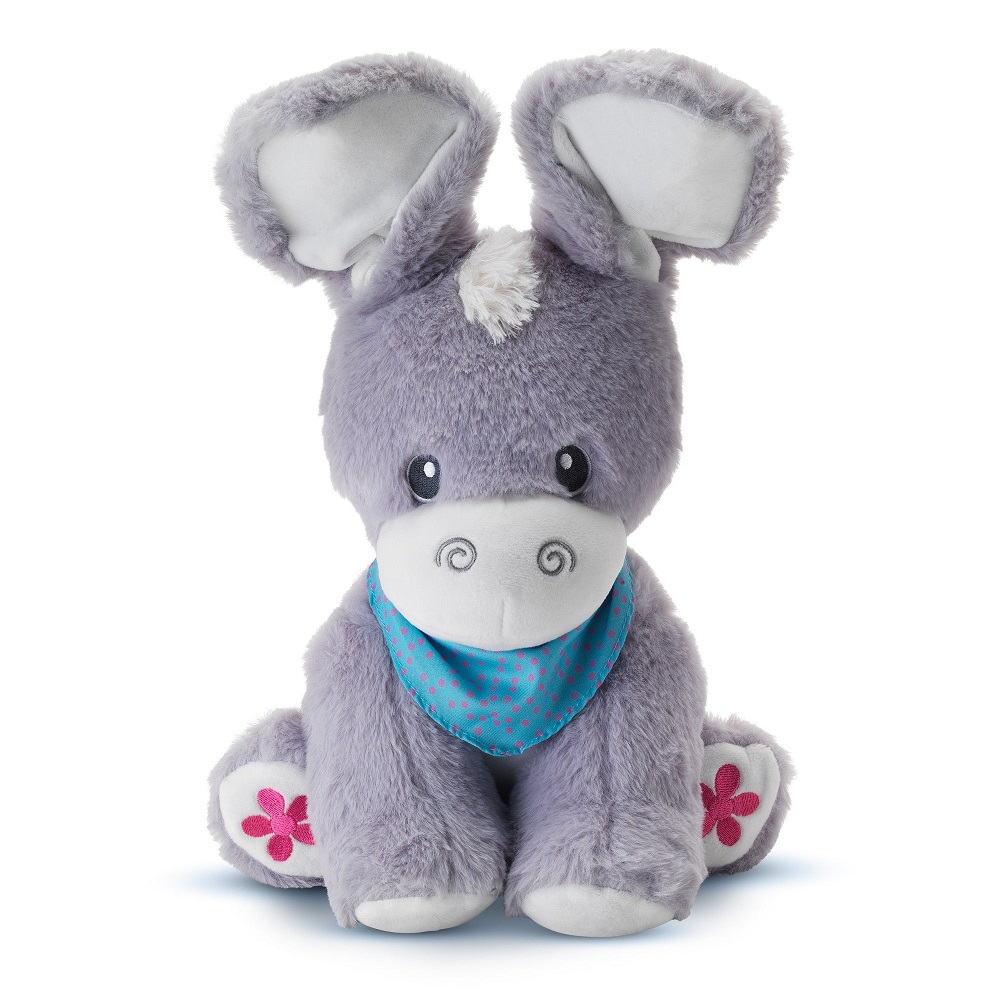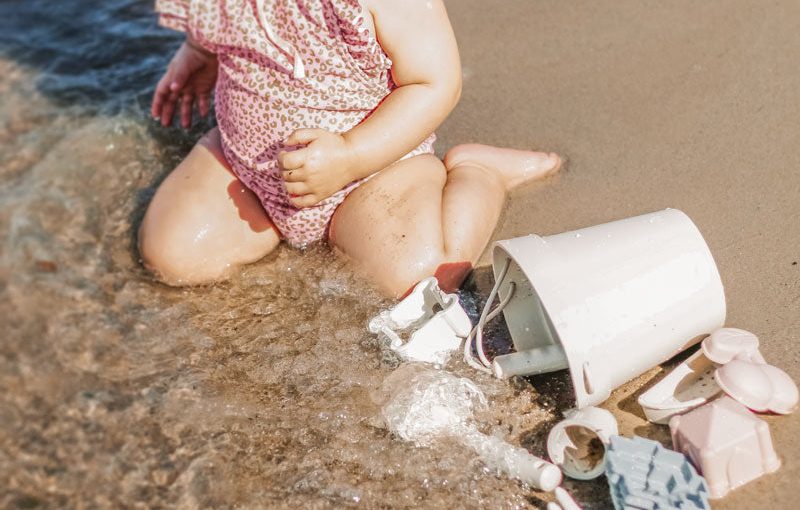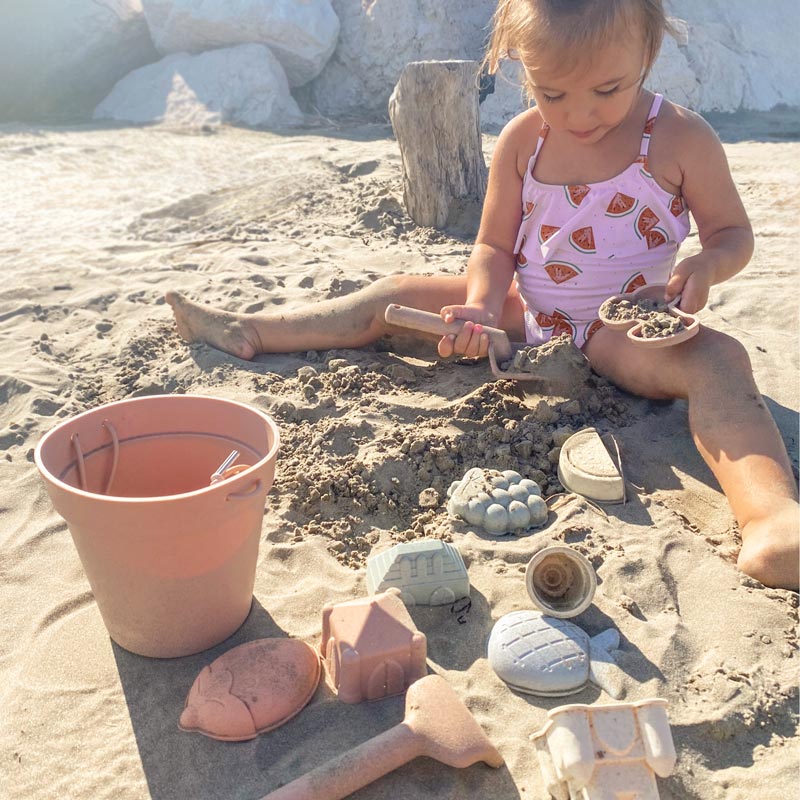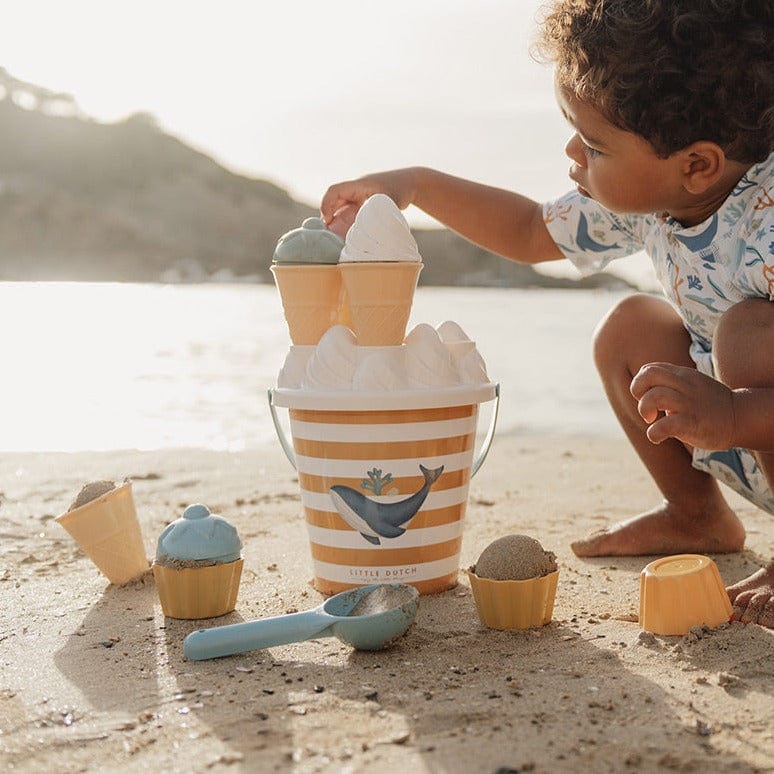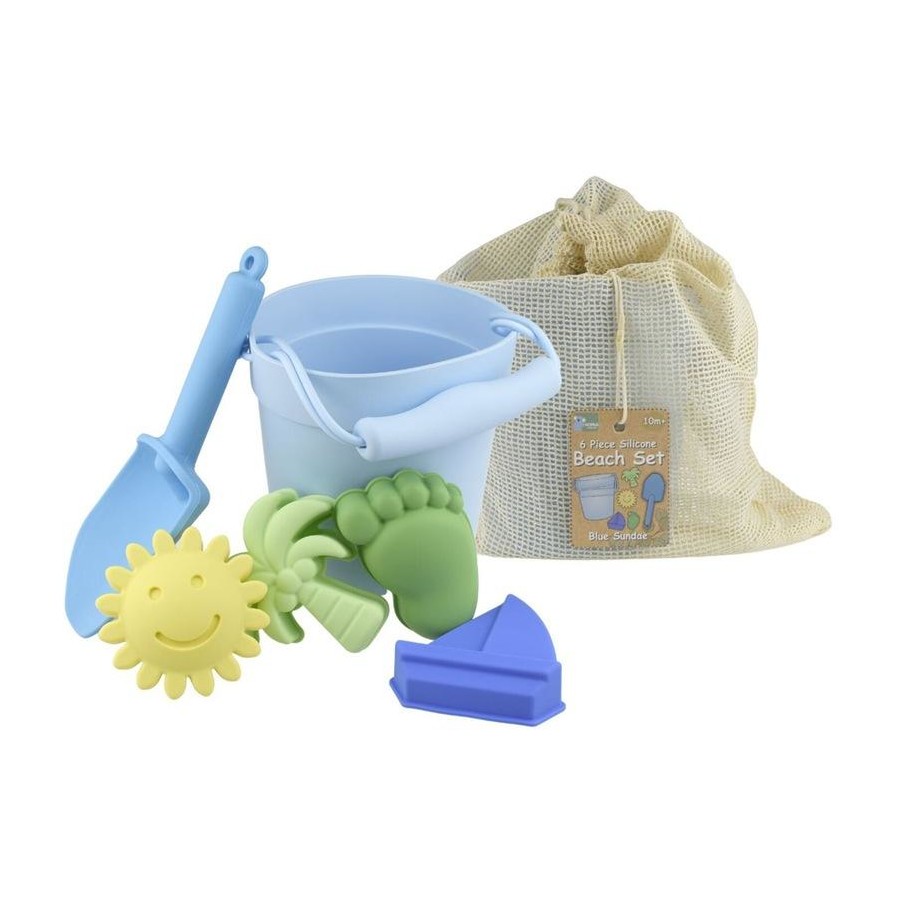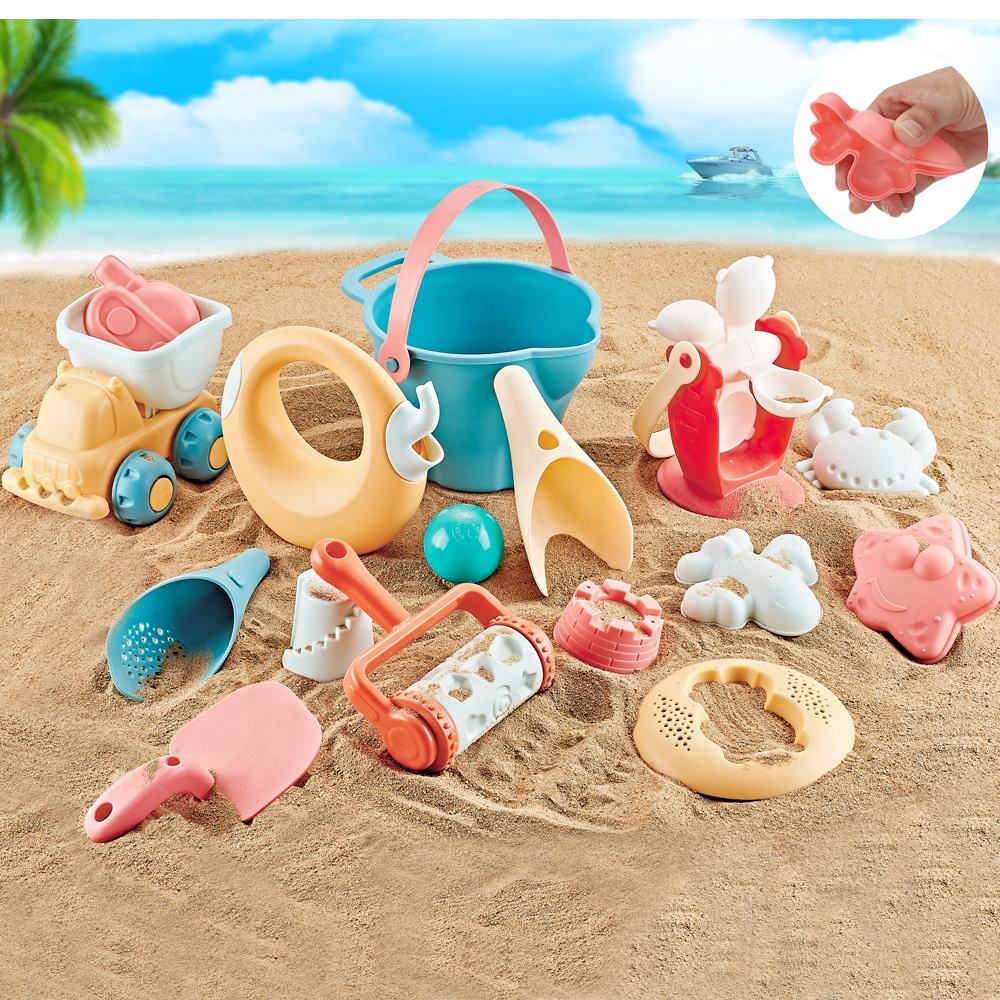Benefits of Stacking Toys for Babies
Promoting Cognitive Development
Baby stacking toys can help babies learn about shapes, sizes, and patterns. They teach cause-and-effect, supporting critical thinking skills. Babies learn to compare and analyze items as they stack them. These activities stimulate brain development and build memory skills.
Enhancing Fine Motor Skills
Stacking toys improve hand-eye coordination in babies. Picking up and placing pieces boosts finger control and grip strength. Repeated use of stacking toys strengthens small muscles in hands and wrists. Fine motor skills are essential for writing and daily tasks as kids grow.
Encouraging Problem-Solving Abilities
Stacking toys teach babies to plan and try different stacking approaches. Babies learn to solve problems by figuring out balance and order. Through trial and error, they develop persistence and patience. Problem-solving with stacking toys builds confidence and prepares babies for learning challenges.
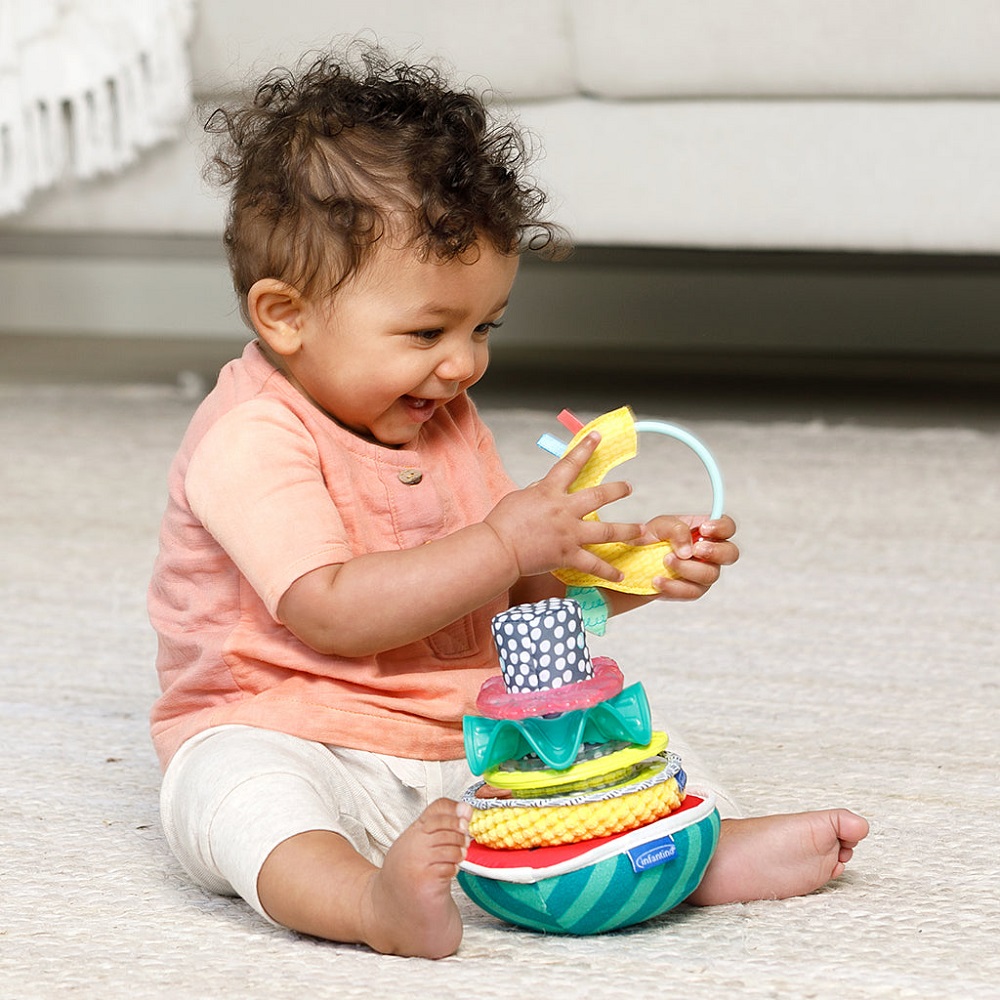
Popular Types of Baby Stacking Toys
Choosing the right baby stacking toys can make playtime more enjoyable and educational. Each type offers unique benefits, ensuring a variety of experiences for your child. Let’s explore some popular options.
Classic Wooden Stacking Rings
Wooden stacking rings are timeless toys loved by many generations. They consist of colorful rings that stack onto a central pole. These toys are durable and eco-friendly, often made from natural materials. Babies can explore sizes, shapes, and colors while practicing motor skills. Classic wooden stacking rings also encourage sorting and sequencing in an enjoyable way.
Silicone and Soft Stacking Toys
Silicone and soft stacking toys offer safe and flexible options for babies. These toys are often made from food-grade silicone, making them safe for teething children. Their soft texture minimizes the risk of injury during play. Many silicone stacking toys double as bath toys, adding versatility. They’re lightweight and easy to grasp, perfect for younger babies developing hand strength.
Interlocking Blocks
Interlocking blocks add a creative twist to traditional stacking toys. These toys allow babies to connect and build, enhancing problem-solving skills. They come in various shapes, sizes, and materials, including plastic and foam. Interlocking blocks grow with your child, offering more complex challenges as they age. They also inspire imaginative play, turning simple structures into houses, towers, or animals.
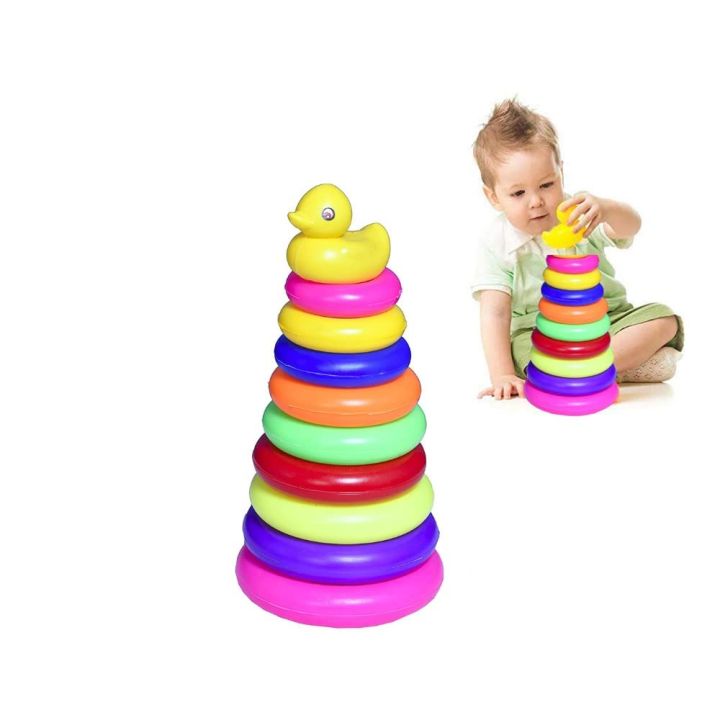
Age-Appropriate Stacking Toys
Choosing the right stacking toys based on your baby’s age ensures fun and safe play. Different age groups have distinct needs and abilities, so tailored options are essential for stimulating development.
Toys for Infants
For infants, focus on simple and safe stacking toys. Look for lightweight and soft designs that are easy to grasp. Silicone or plush stacking toys are excellent choices, as they are gentle and safe for tender hands. Toys with high-contrast colors also attract an infant’s attention and stimulate visual development. At this stage, the goal is to develop basic hand strength and early motor skills.
Stacking Options for Toddlers
Toddlers enjoy more challenging stacking toys that stimulate their growing minds. Interlocking blocks or classic wooden stacking rings add complexity while remaining manageable. These toys encourage sorting, sequencing, and balance skills. Toddlers also start to explore imaginative play, turning simple stacking activities into creative adventures. Durable materials ensure these toys endure active play.
Advanced Stacking Challenges for Older Babies
Older babies who have mastered basic stacking need more advanced challenges. Look for toys with smaller pieces or unpredictable shapes. Interlocking systems or stackable tiles promote complex problem-solving. Some stacking toys for this age group also include numbers, letters, or patterns for early learning. Advanced toys prepare babies for preschool by enhancing fine motor control, persistence, and cognitive abilities.
Features to Look for in Quality Stacking Toys
When selecting baby stacking toys, quality matters. Choosing toys with the right features ensures safety and enhances playtime. Below are critical aspects to consider when shopping for these developmental toys.
Safety Standards and Materials
Safety should always be the top priority when choosing stacking toys. Look for toys made from non-toxic, BPA-free, and lead-free materials. Opt for toys with smooth edges to prevent cuts or injuries. Double-check that the toy meets safety standards, such as CPSIA or international equivalents. For babies prone to chewing, choose food-grade silicone or wooden toys with safe coatings. Ensuring safety fosters worry-free playtime.
Colorful and Engaging Designs
Bright and engaging designs capture your baby’s attention during play. Toys with bold colors stimulate visual development and focus. Varied colors and patterns also help babies learn to distinguish between shades. Interactive designs, like stackable shapes or textured surfaces, keep kids interested longer. Fun designs make learning enjoyable and motivate your baby to explore.
Versatility and Durability
High-quality stacking toys offer versatility for extended use. Choose toys that grow with your child by allowing for more complicated stacking or building challenges. Versatile options like interlocking blocks enable creative play beyond basic stacking. Durability matters too, especially for active babies and toddlers. Look for well-constructed toys made of strong materials like solid wood or sturdy silicone. Durable stacking toys ensure they last through years of play, saving money in the long run.

Creative Play Ideas with Stacking Toys
Stacking toys can be more than just fun—they inspire learning and creativity. Incorporating innovative play ideas helps your baby develop in different ways while keeping them entertained. Below are some creative and engaging ways to play with stacking toys.
Building Shapes and Structures
Encourage your baby to create different shapes and structures with stacking toys. Show them how to build towers, pyramids, or even bridges. For wooden rings and interlocking blocks, demonstrate stacking by size or shape. Guide older babies to arrange pieces into recognizable patterns, improving their spatial awareness. Creating structures promotes fine motor skills and introduces basic geometry concepts.
Learning Colors and Numbers
Use stacking toys to make learning colors and numbers enjoyable. Toys with multi-colored pieces allow you to teach color recognition. Ask your child to stack the red ring, then the blue one, and so on. For older babies, assign a number to each piece and focus on counting aloud as they stack. This method introduces early math skills while keeping the activity playful and interactive.
Interactive Playtime with Parents
Make stacking time more engaging by involving yourself in the process. Play a turn-based stacking game where you and your baby alternate stacking pieces. Cheer them on when they build successfully, boosting their confidence. Adding a narrative, like “Let’s build a tower for your teddy bear,” can spark imaginative role-play. This shared activity strengthens bonds and makes learning moments more memorable.
Choosing Eco-Friendly and Sustainable Toys
Eco-friendly toys are better for your baby and the planet. They use safer materials and promote sustainability. Choosing such toys can make a positive environmental impact while ensuring safe playtime for your child.
Why Sustainability Matters in Toy Selection
Sustainability helps protect our environment for future generations. Eco-friendly toys reduce waste and pollution. They are often made from renewable or recycled materials. Using sustainable resources minimizes harmful effects on nature. These toys also avoid toxic chemicals, making them safer for babies. By choosing sustainable baby stacking toys, you support ethical manufacturing practices and environmental responsibility.
![]()
Top Picks for Eco-Friendly Stacking Toys
- Wooden Stacking Toys: Made from sustainably sourced wood, these toys are durable and biodegradable. Look for ones with non-toxic paint or natural finishes.
- Bamboo Stacking Rings: Bamboo grows quickly and requires fewer resources, making it an excellent renewable material. These toys are lightweight, sturdy, and safe for babies.
- Recycled Plastic Toys: Some stacking toys are made from 100% recycled, BPA-free plastic. They offer both durability and environmental benefits.
- Silicone Stacking Rings: Choose options made from food-grade silicone, which is both safe and long-lasting. Silicone toys are also soft, ideal for teething babies.
- Handcrafted Options: Support small businesses offering handcrafted stacking toys. Many use natural materials while avoiding industrial waste.
By selecting eco-friendly stacking toys, you create a safer play space and help the planet thrive.
Tips for Introducing Stacking Toys to Your Baby
Introducing stacking toys to your baby in a fun way ensures successful engagement and development. Here are practical tips to help your child enjoy and benefit from these toys.
Creating a Safe Play Environment
Provide a baby-friendly play area. Make sure the space is clean and free from sharp objects. Use stacking toys that meet safety standards, like BPA-free and non-toxic materials. Always supervise to prevent choking hazards with smaller pieces. Set soft mats to cushion falls if your baby is learning to sit.
Encouraging Independent Play
Let your baby explore stacking toys at their own pace. Show enthusiasm without interfering too much. Demonstrate simple stacking and then let them try on their own. Offer praise for effort and progress to boost confidence. Gradually increase challenges to keep them engaged as they improve.
Combining Stacking Toys with Other Learning Activities
Integrate stacking toys into learning routines. Teach shapes, colors, or sizes while playing. Use toys to count aloud, enhancing early math skills. Incorporate storytelling, like building a castle for a toy figure, to inspire creativity. Mixing stacking with other activities makes playtime educational and exciting.
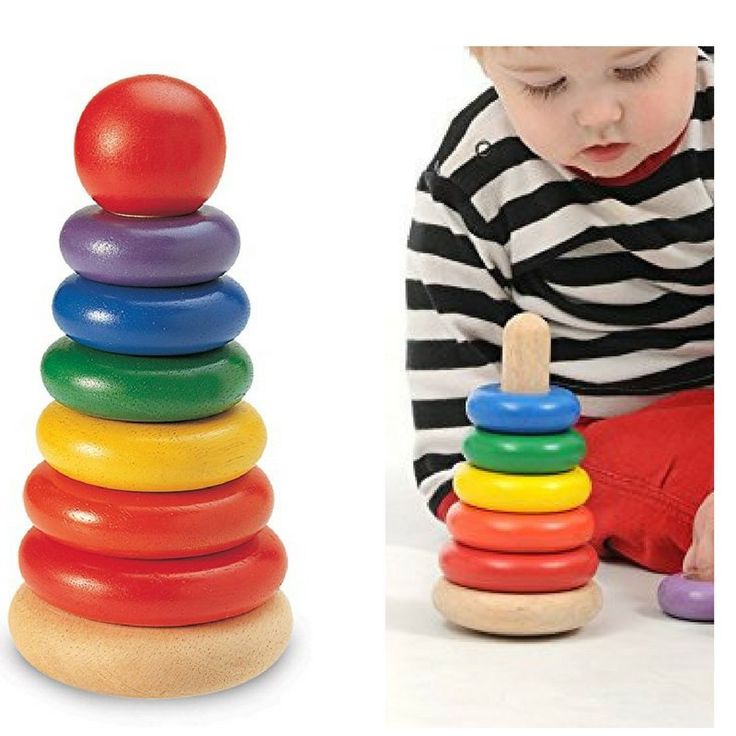
Safety Considerations for Stacking Toys
Selecting Age-Appropriate Toys
When choosing stacking toys, safety should always be a priority. Toys should be age-appropriate, with no small parts that could pose a choking hazard. Most manufacturers provide age recommendations based on safety testing. Parents should pay close attention to these guidelines to ensure a safe play experience.
Additionally, opting for toys made from non-toxic materials is critical for babies, who are likely to explore with their mouths. Many brands now offer eco-friendly and safe options that provide peace of mind for parents. Understanding and prioritizing safety helps create secure environments for children to learn through play.
Regular Inspections
Parents should also regularly inspect stacking toys for any signs of wear and tear. Fabric toys may have seams that loosen over time, while wooden blocks can chip or crack. Conducting routine checks ensures that toys remain safe for play. If any parts are damaged, it is best to replace them to prevent potential injuries.
Teaching children to respect their toys and treat them gently can also contribute to their longevity. Instilling habits of care and maintenance from an early age reinforces the importance of responsibility and improves their understanding of safety measures.
Developing a Bond Through Play
Quality Time with Caregivers
Engaging in play with baby stacking toys provides an excellent opportunity for caregivers to bond with their children. Quality time spent building, creating, and exploring fosters emotional connections and trust. Parents can take the lead in interactive activities, encouraging cooperation and collaboration during play.
By participating in stacking activities, caregivers become more attuned to their child’s interests and development. They can provide guidance and support while inviting children to lead the way. This collaboration enriches the play experience and allows children to feel empowered through their creativity.
Sharing Accomplishments
As children successfully stack towers or complete challenges, caregivers can celebrate their achievements. Recognizing these moments encourages confidence and boosts self-esteem. Simple praise, high-fives, or playful celebrations can reinforce positive behaviors. This validation helps children develop a sense of accomplishment, inspiring them to tackle new challenges with enthusiasm.
Creating an environment where successes are acknowledged nurtures a love for learning. As children realize their capabilities through play, they become more curious and eager to explore new interests. Celebrating milestones strengthens the connection between caregivers and children, fostering positive relationships that support development.
Conclusion
Baby stacking toys are essential tools in promoting creativity and motor skills during playtime. They offer numerous benefits, from cognitive development to fine motor skill enhancement. Additionally, the variety of styles, materials, and opportunities for creative play make stacking toys versatile and appealing to young children.
Engaging with stacking toys lays the foundation for essential skills that extend beyond playtime. As children experiment with stacking, they learn problem-solving, social interaction, and emotional recognition—all vital parts of early development. Incorporating these toys into a child’s routine can be a wonderful way to enhance their learning experiences.
In summary, stacking toys do more than occupy time; they foster meaningful interactions and growth opportunities. By choosing safe, engaging, and well-designed stacking toys, parents can offer enjoyable and educational experiences. Embracing the joy of childhood play helps cultivate lifelong skills, creating a solid foundation for future learning and exploration.
